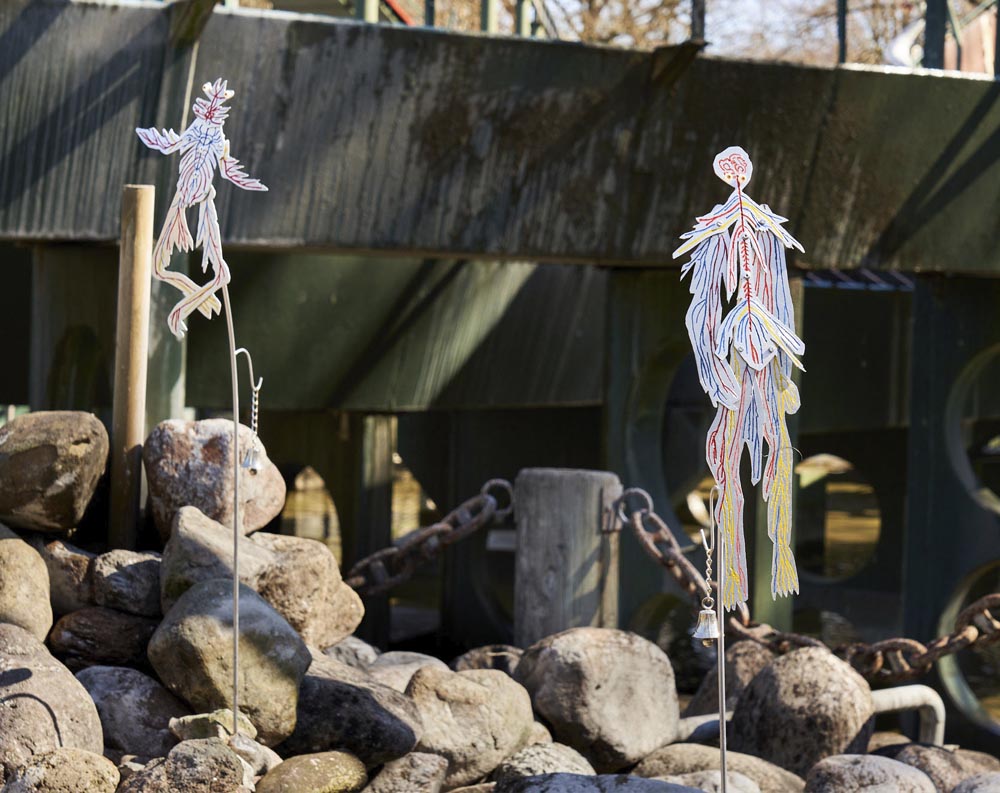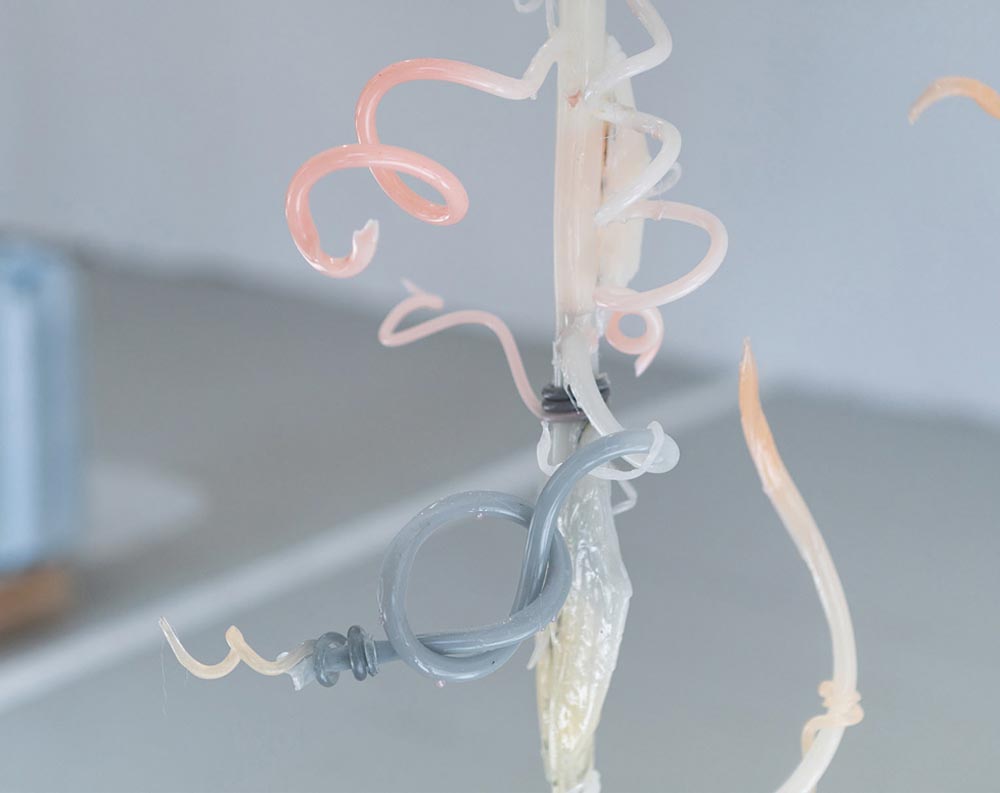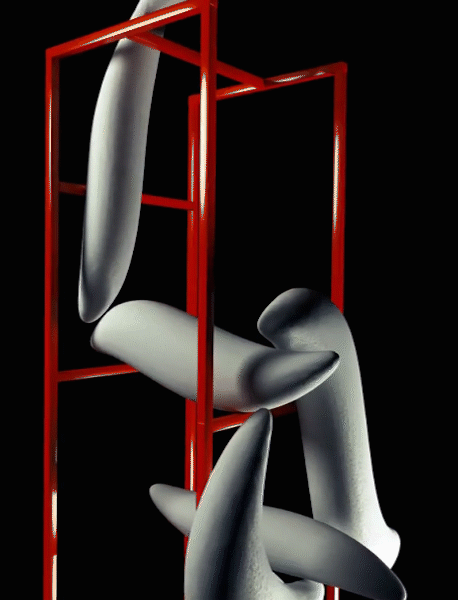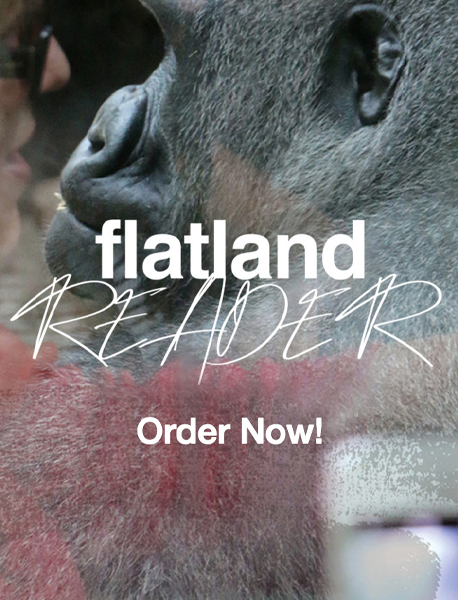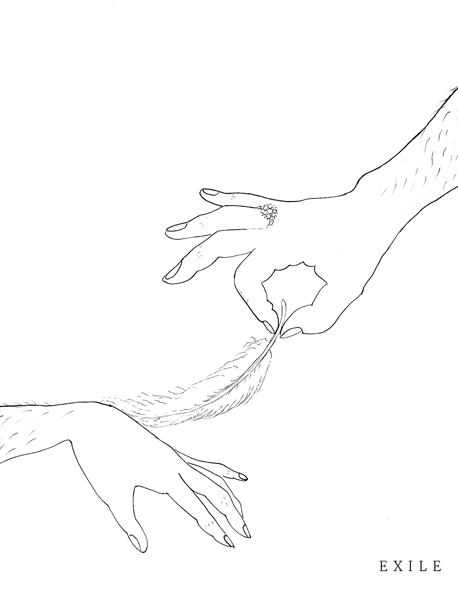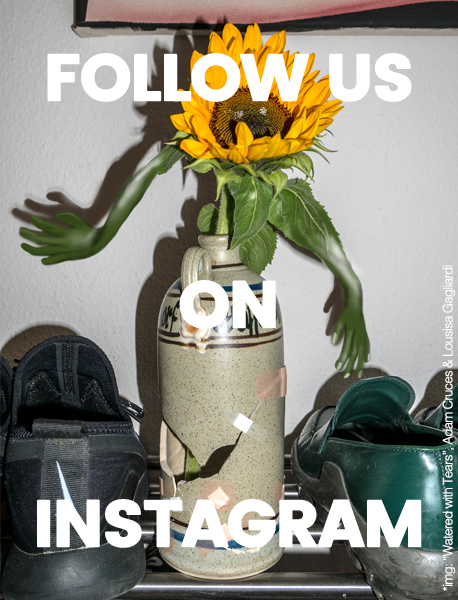OFLUXO
Mouse Trap
Zody Burke
At DOM Galerija, Riga, Latvia
April 01 — 14, 2022
Photography by Moritz Richter
In woven sand with a hardwood floor
It is rare to encounter someone that has never been trapped. I instantly think of elevators, oh, and toilet cabins. Or a toxic work environment, in which one at a certain point realizes they are entangled and have become codependent. It’s not unthinkable today to add a political regime to this list. Or a set of moral musts. The real challenge is not to feel trapped continuously, surrounded by a stream of information, from various, wide reaching channels, feeding us sights of greener grass from other sides.
The most genius ability of a trap however is its potential to remain unnoticeable. Successful traps are the ones we blend in to, we live through, and can not even see with eyes wide open. The world of the Watchowski’s The Matrix comes to mind. These traps adapt so well that they become part of our inner system. The hostage blends with the mechanism in such an amount that he almost becomes the trapper himself. Pink Floyd approaches this with the poetic expression of being comfortably numb. With a doubtful greeting, someone looks for companionship, tries to understand what situation they’re in, why, and shares experiences. On how they feel feverish without having a clue. Because in the end it feels quite eerie, really, to play a part in a play you didn’t choose nor notice.
During the beginning of April in DOM Galerija, a trap has never felt so at home. I voluntarily open the door. The blinds are down as I enter the intimate yet rich sculptural world of Zody Burke.
As my eyes hop through wood carvings, weavings, video’s and even living beings moving around, I am firstly captured by the artist’s attentiveness towards this material. Each part of the exhibition is in an intimate exchange with Burke, a delicate engagement. I don’t mean mere personal memories or straightforward expressions. I rather notice a sort of respect in following the path of the wood, listening to it while responding with a decisive, ‘I see where this can go’ attitude. A slow moment of growing together. Most of all, treating it with (today’s most valuable gift) time.
I can’t help but connect this engagement and sensibility to an interest in world building. This thought comes as no surprise, as Burke is currently artist-in-residence at Komikss (a Latvian Comic book publishing house) and has worked on her own series not that long ago. In a field of storytelling and fiction, world building plays an essential role. It is also intrinsically associated with the virtual world and the creation of video games. I start to walk through the exhibition, the homy trap, as a sandbox. Sandbox video games are about constructing the world around you. A classic, MineCraft, does not steal its name: to generate a universe, one must have skill at hand, gather.
While Zody Burke carefully puzzles a world together, shapes it, mends it, I go through what it consists of. Who are the players, and what is at play?
A sandbox gives the freedom to explore and construct. Zody Burke’s choice of material is enchanting. The presence of wood gives a warm feeling. As if I am still tied to a freedom of what happens outside, as well as spoiled with the sensation of a hardwood floor under my toes.
Several pieces of wood are spread over the gallery space. Each is delicately treated. Wood becomes the foundation for various sculptures, the carrier. From this it starts. The artist inserts material.
Shapes such as stairs, frames, almost storyboards, in the light blue hue of ceramics or resin, enlarge the potential of the wood. They feel like intentional glitches, through which Burke softly askes the wood to become both the set as well as the storyteller.
Weavings, micro-sculptures, are holding on to the edges of the resin and the wood. Their steady structure captures me. As if it can either catch me, hold on, or connect me. Even though those parts appear delicate in their materiality (soft, broken white), they also give a sense of structure, a grid. Each curve of thread makes the total piece stronger.
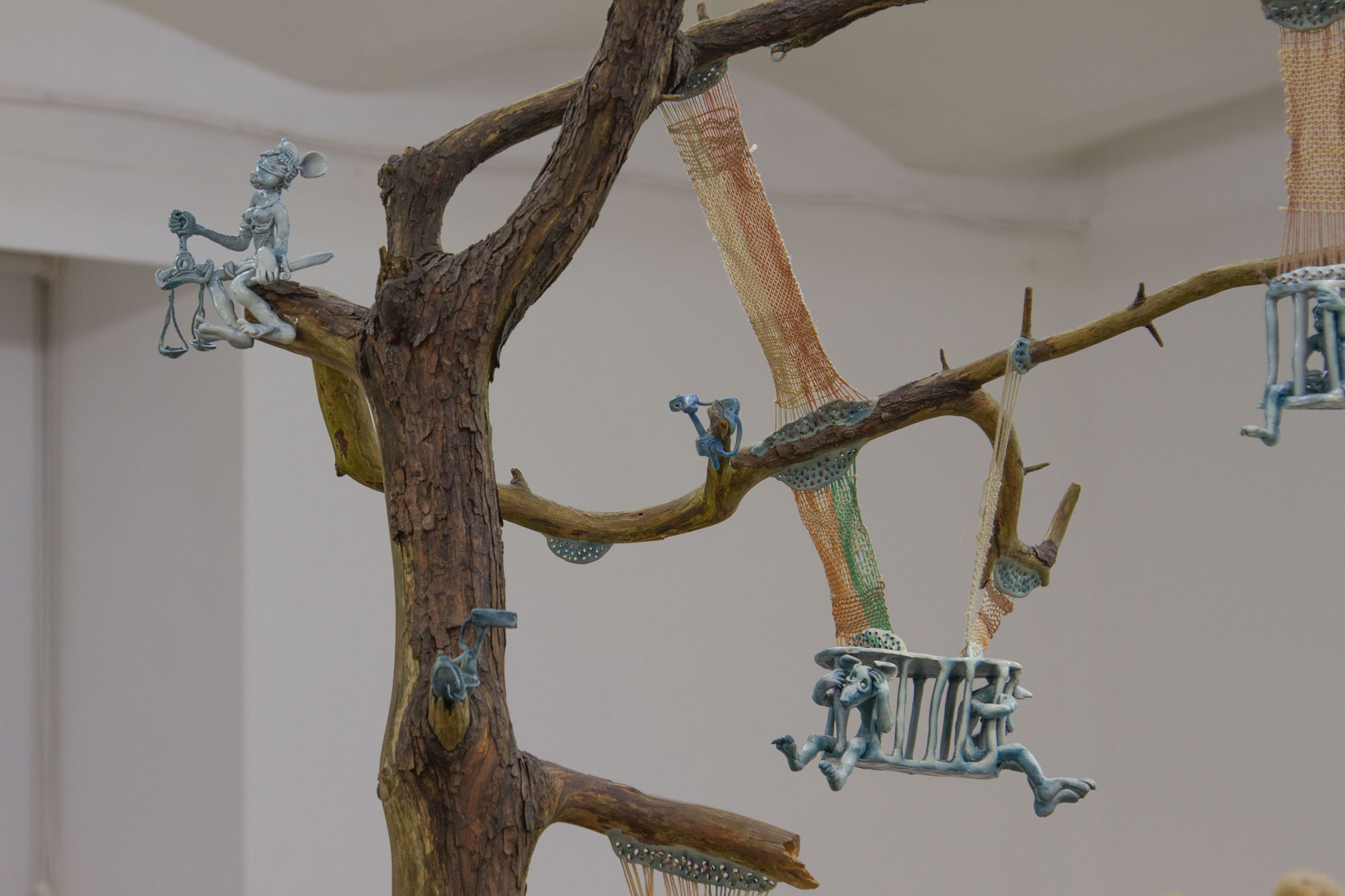
The material works in layers. Resin is inserted inside the cracks of the wood, while moving images are not only projected on it from the outside, but also live within it. I notice a similar intention in the panorama print. Burke uses the corner of the gallery to show a wide view of a landscape (where the blue of the sky reminds us of the resin from the sculptures), while a little further, parts of the wall are hollowed out for mice to move around. The wallpaper of their spaces is a similar view, only about half a meter deeper in the wall. These shifts in the position of material in relation to one another give depth to the space. It makes the world more lifelike, recognizable, and inviting to move around in.
How hungry people are for sandboxes – for building stuff. Even though each material is carefully treated individually, there is an undeniable presence of community. And it is not only people that are hungry for building.
The world is at first inhabited by mice, as the title of the exhibition, Mouse Trap, reveals. Various parts of a wall are carved out for them. I assume there are 3 mice in the gallery space, but it’s quite hard to count, as they crawl under stuff, between narrow cracks, even through a tube to get to another space. How vivid they are, even in a gallery. The animals are fed with dried fruit and live inside us have known of, maybe heard, but rarely anyone has been able to witness so directly.
While the real life mice move around a few steps away from me, the storyboards and other tiny sculptural creations of mice in resin get a mythical touch. Even though they are vibrantly living in the woods, sitting, running, playing guitar or simply being together, the presence of live mice turns them into depictions, stories. Memories, either from personal diaries or from their forefathers. Maybe even prophecies yet to happen. I won’t deny I am also guided by the one mouse drawn under the space bar of a keyboard, which is laid out at the window with grass growing between its keys. This one has a presence which can only be godlike. It reminds me of lions in medieval paintings, with their wide faces, humanlike noses and disrupted proportions. Which is not surprising, since the access to observe a lion was extremely limited. Yet at the same time it transforms the lion into a mythical creature. Through its isolation on the keyboard, it layers the world, this time in a social rather than physical way. But it also touches upon the contemporary presence of archetypes: in both literature and pop culture, the mouse is omnipresent as a sign of collective effort or community.
Still a sandbox is often referred to as a non-game. This is due to its lack of objective. Burke’s world building however makes me wonder whether there is a blurred objective yet to be discovered. Wanting to be discovered. I am actually able to see mice run through the walls. The ones in the wood, mythical cave drawings, contain a surprising amount of cameras, cages, bars and grids. The godlike creature under the spacebar is separated and seems to practice control from its keyboard. And then I met the joker.
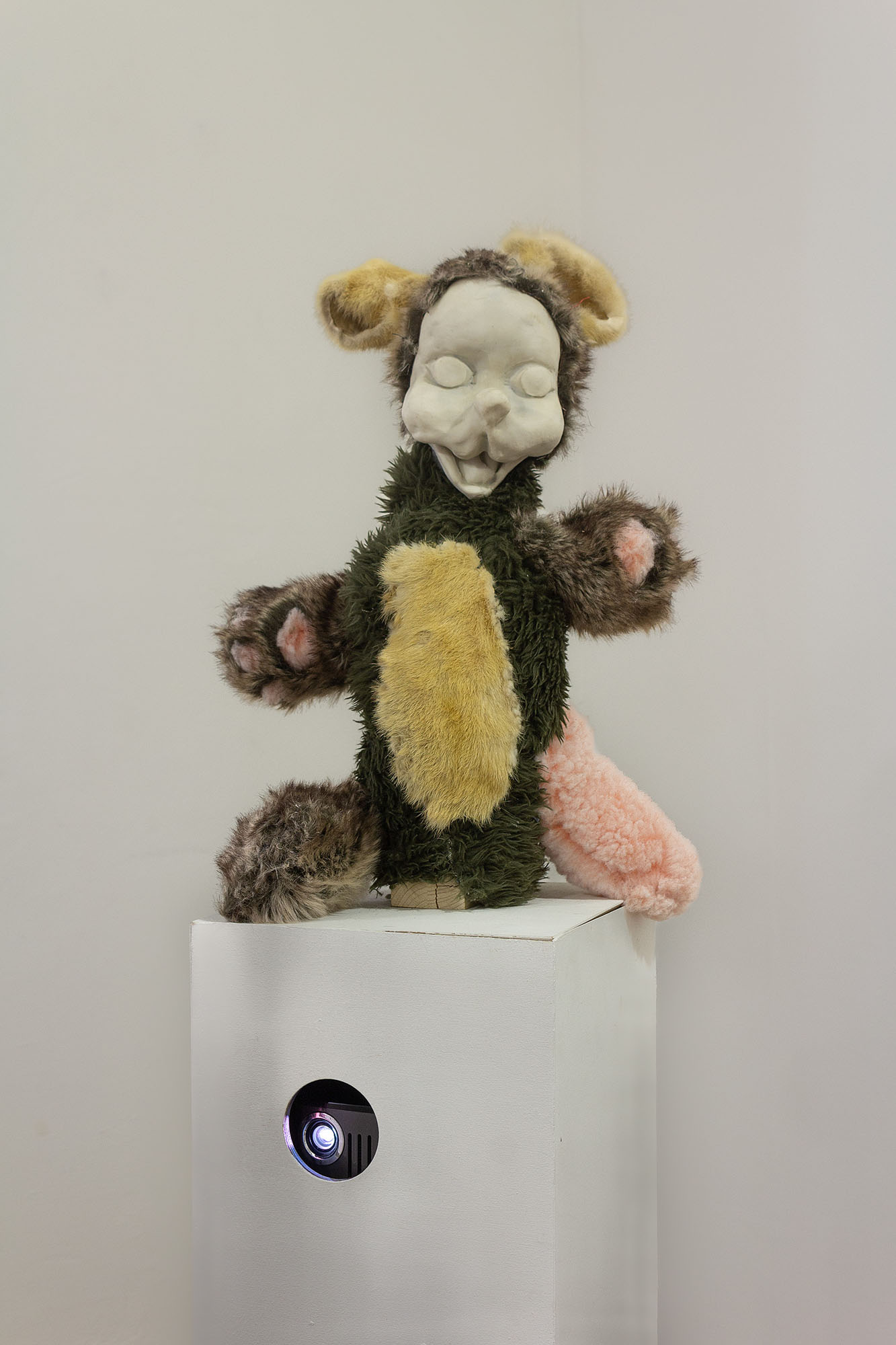
With blunt eyes and pale skin, he is covered in a soft mouse’s fur. But it feels more like a suit. This joker does not sit in the woods with the other resin mice: the sculpture is separated, lurking from a white pedestal out of which a projection is directed on the wood. The first joker card appeared in the middle of the 19th century as a blank one, which was not intended for actual play. Empty, without character and clear role, it somehow became the card which was ranked above all others. The puppet is not living nor completely still. As an animatronic, it subtly moves its head back and forth, staring between the living mice and the depictions. With this joker-like sculpture, the artist pauses my twirling around the well shaped world and breaks the genius spell of the trap. It brings me to the membrane of world in a world, shows me the edges which every sandbox is made of, and makes me wonder how fiction can be well hidden regulation and vice versa. The world building Zody Burke constructs in Dom Galerija is both the trap and the trickster. And thus the joker mentions, ready for a laugh, that even the most self-shaped game – a blank page for exploring and constructing or even a blank card ranking above all others – is never free. It blurs our collective projections, and numbs, comfortably.
— Laura de Jaeger
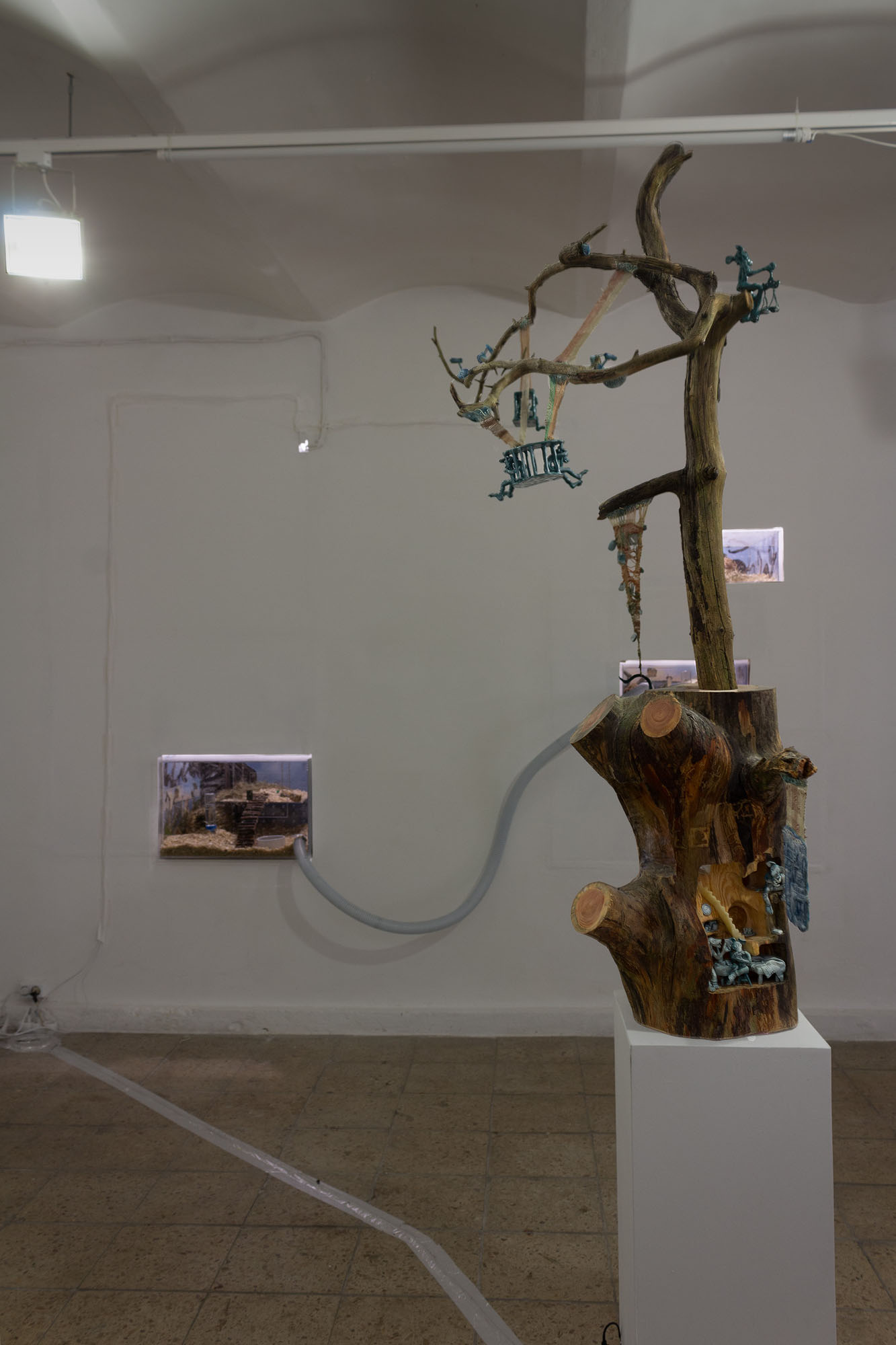
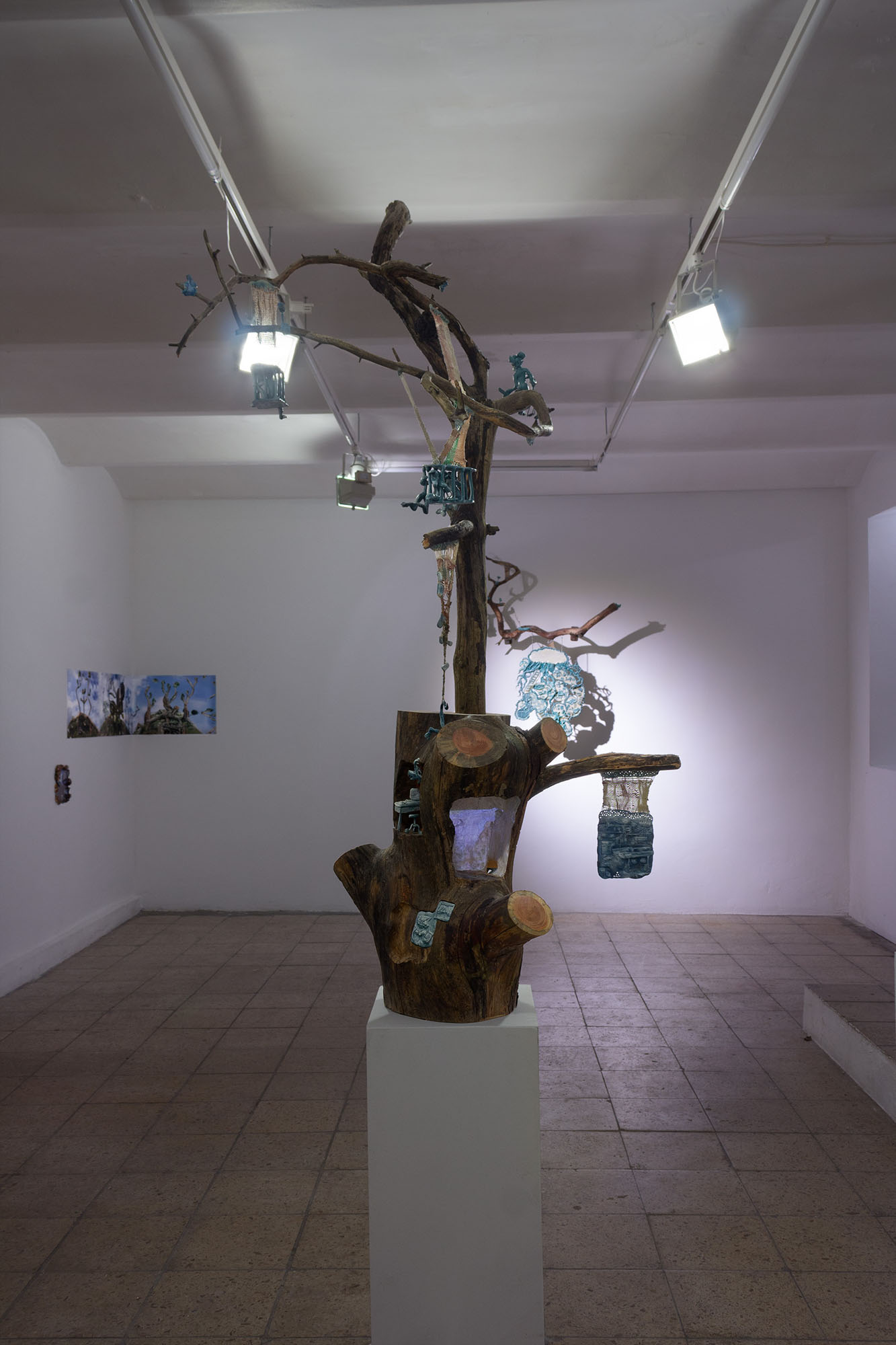
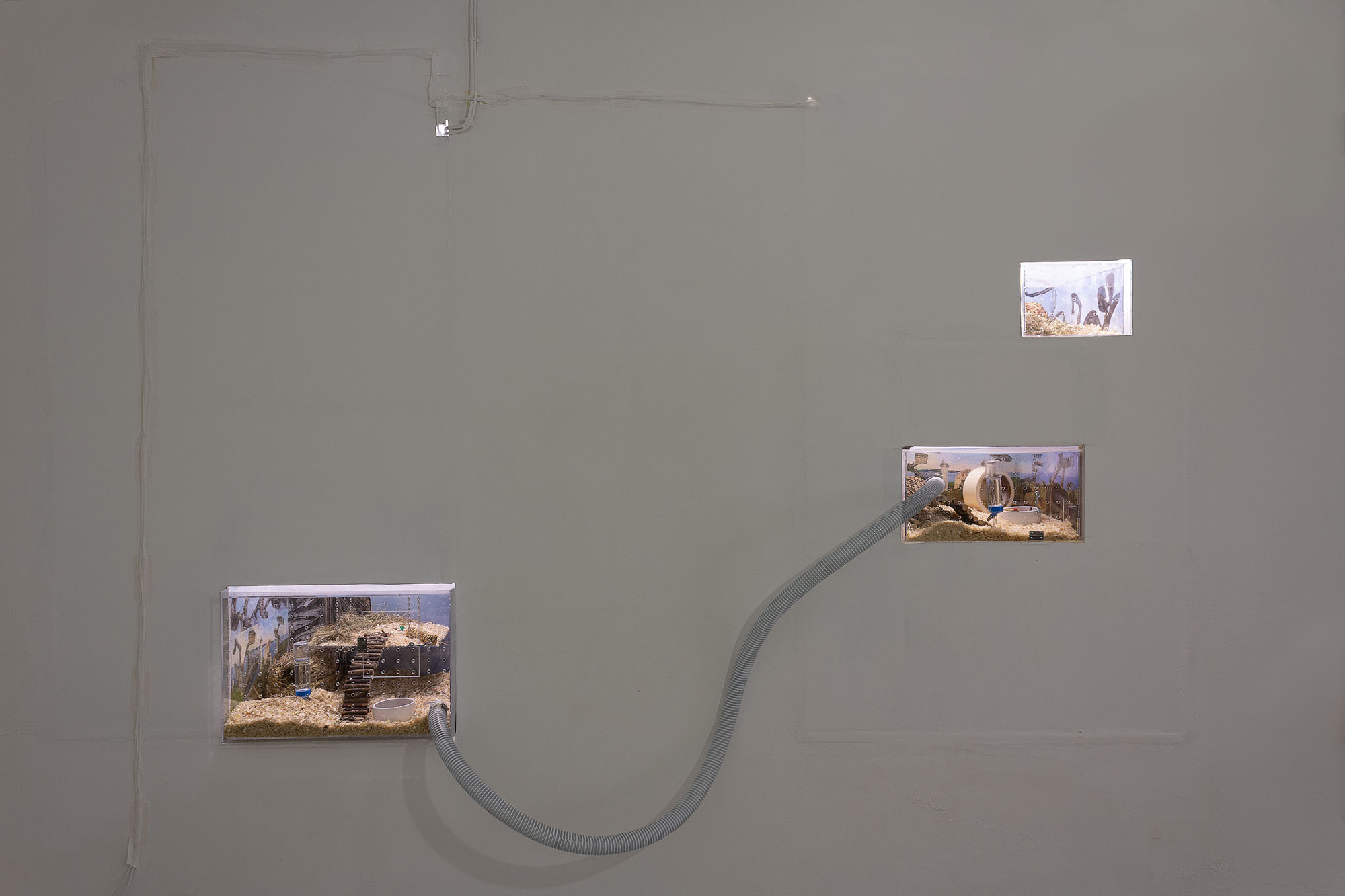
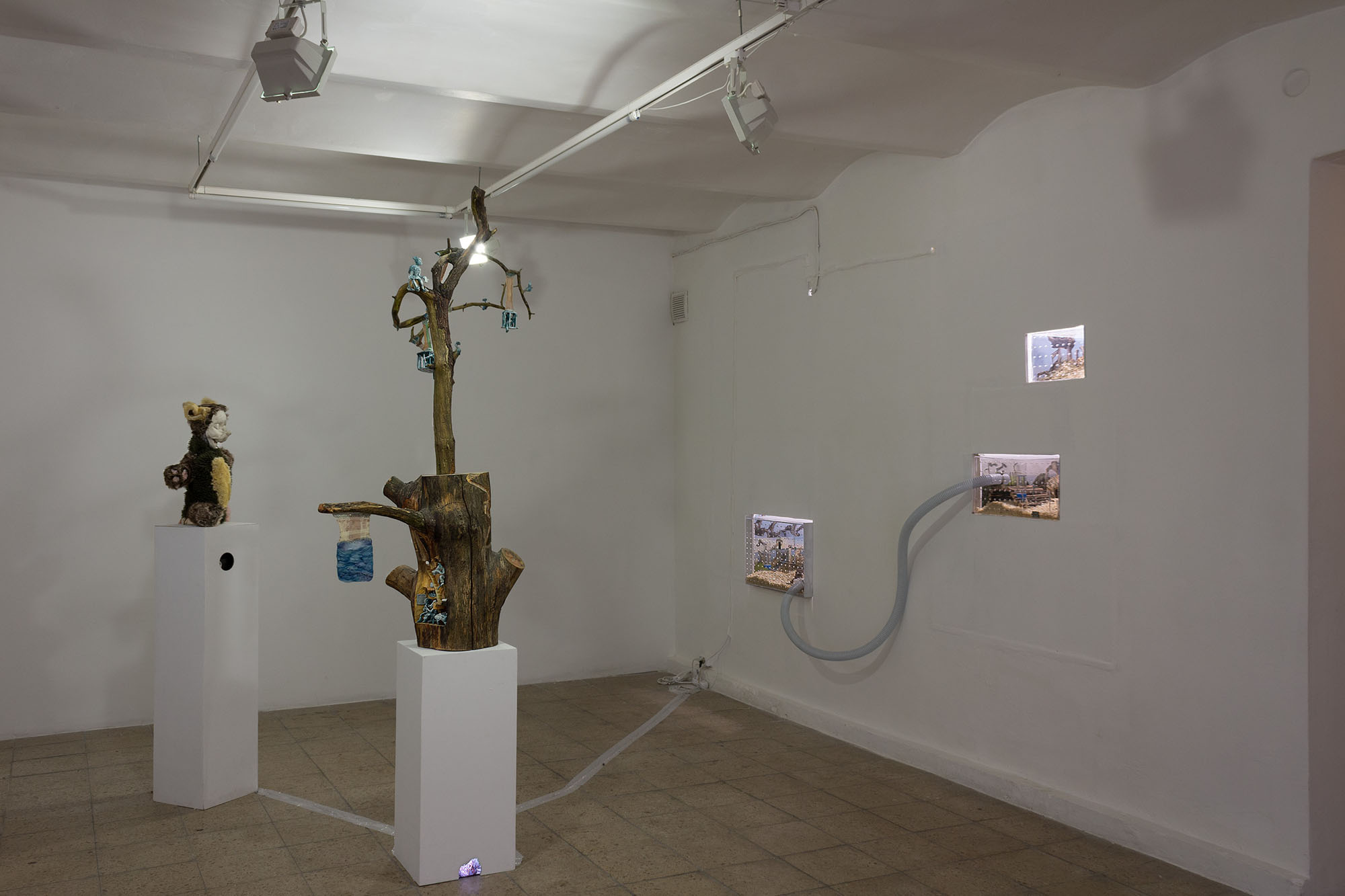
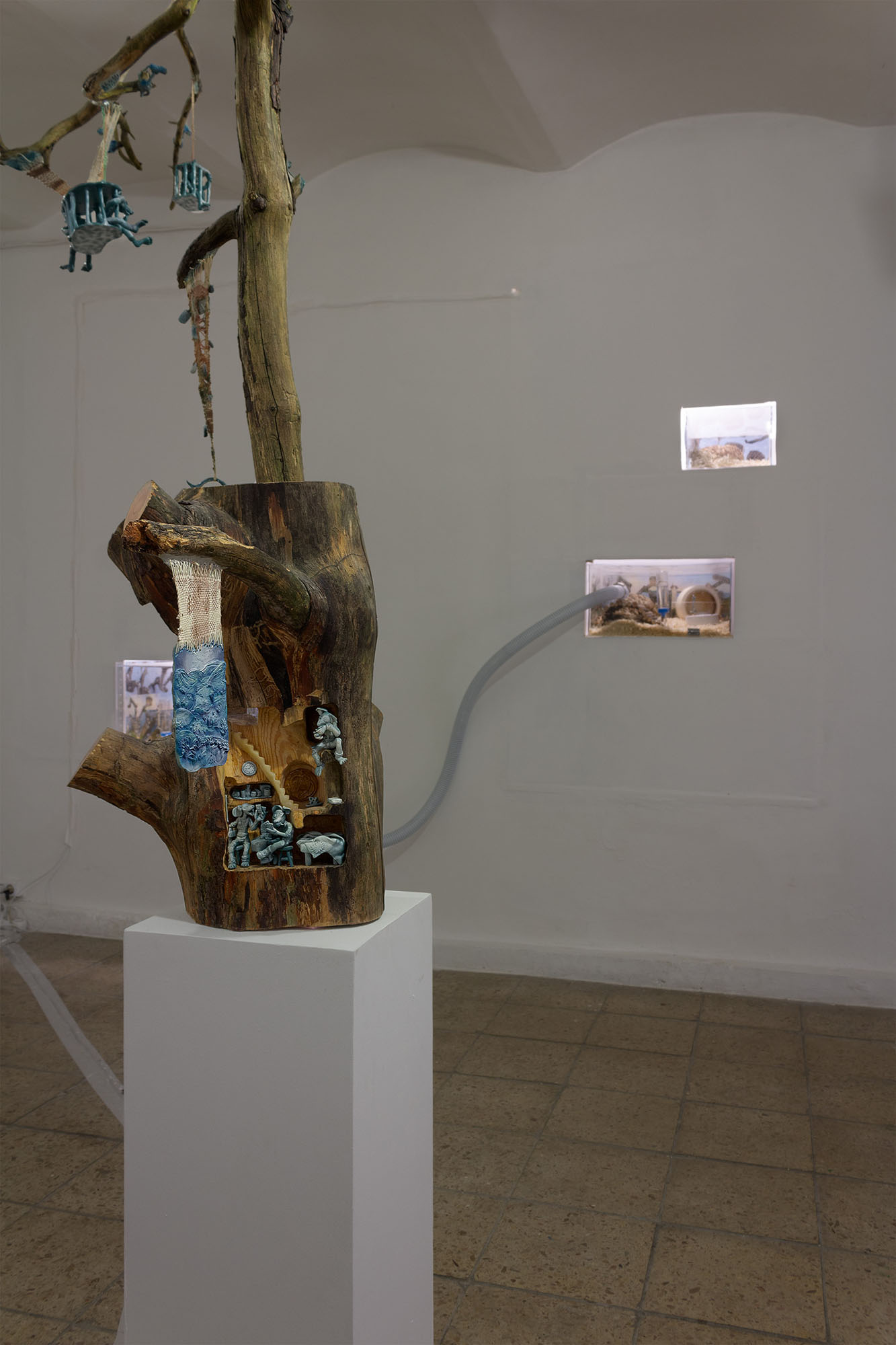
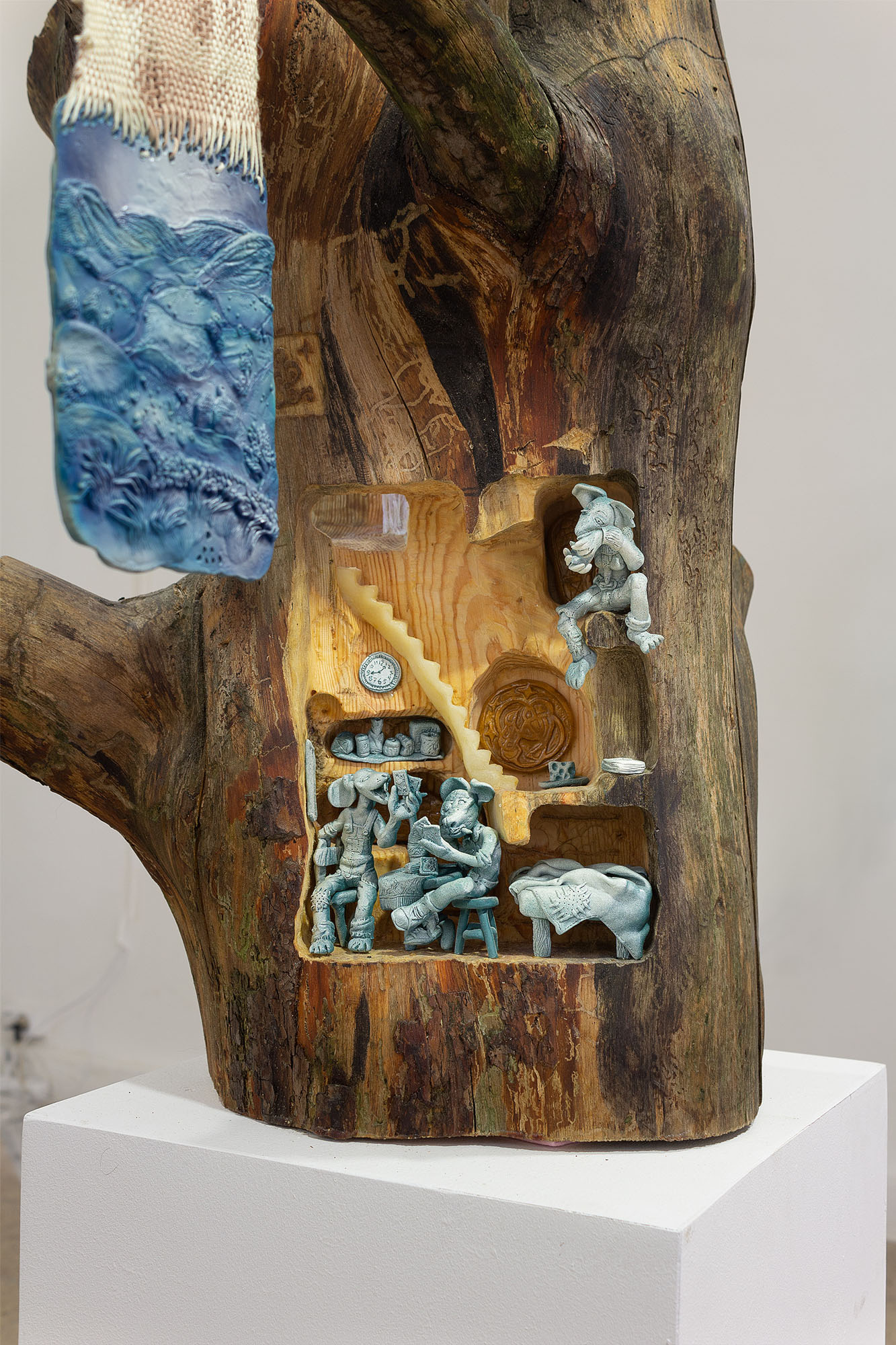
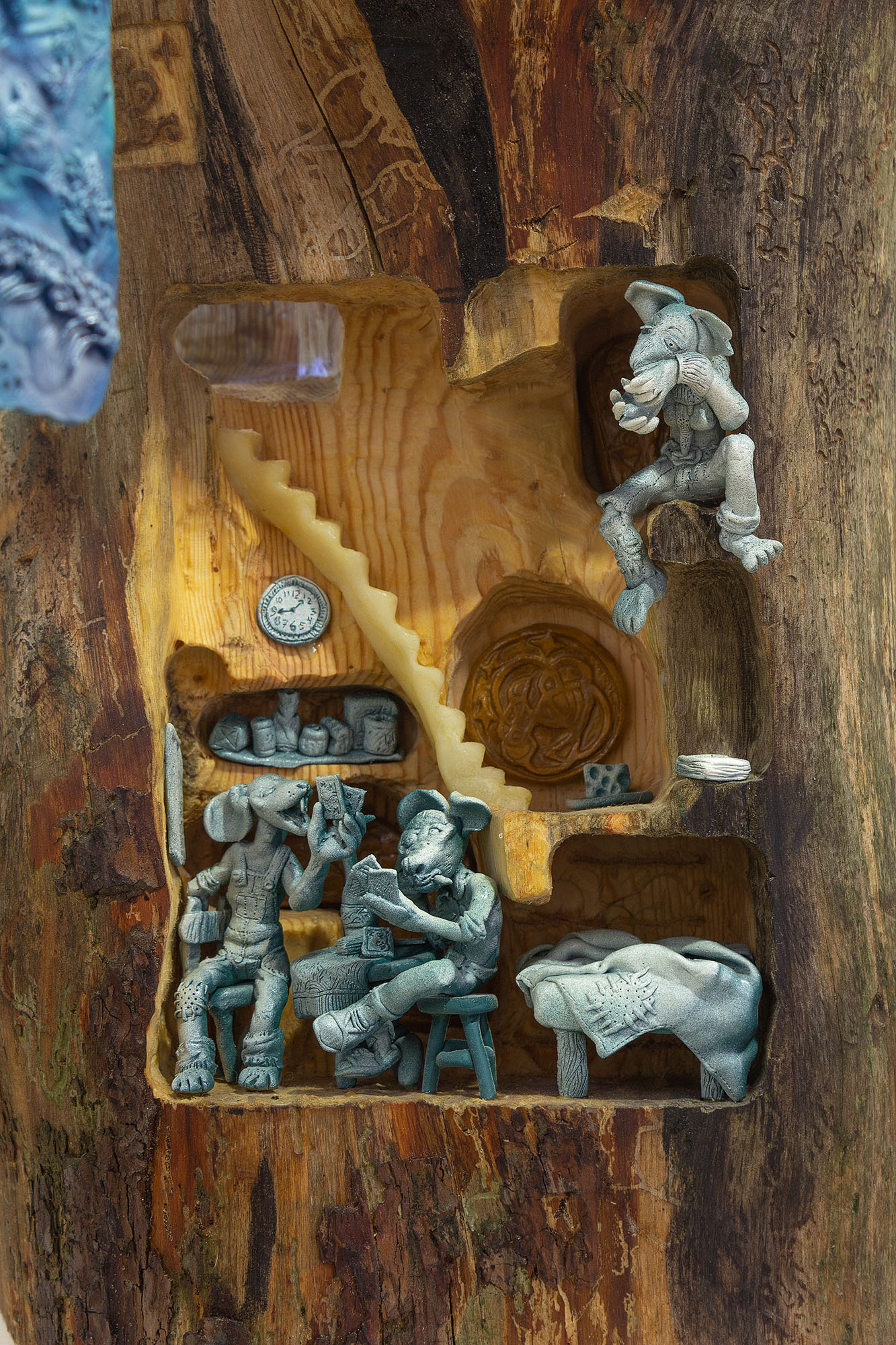
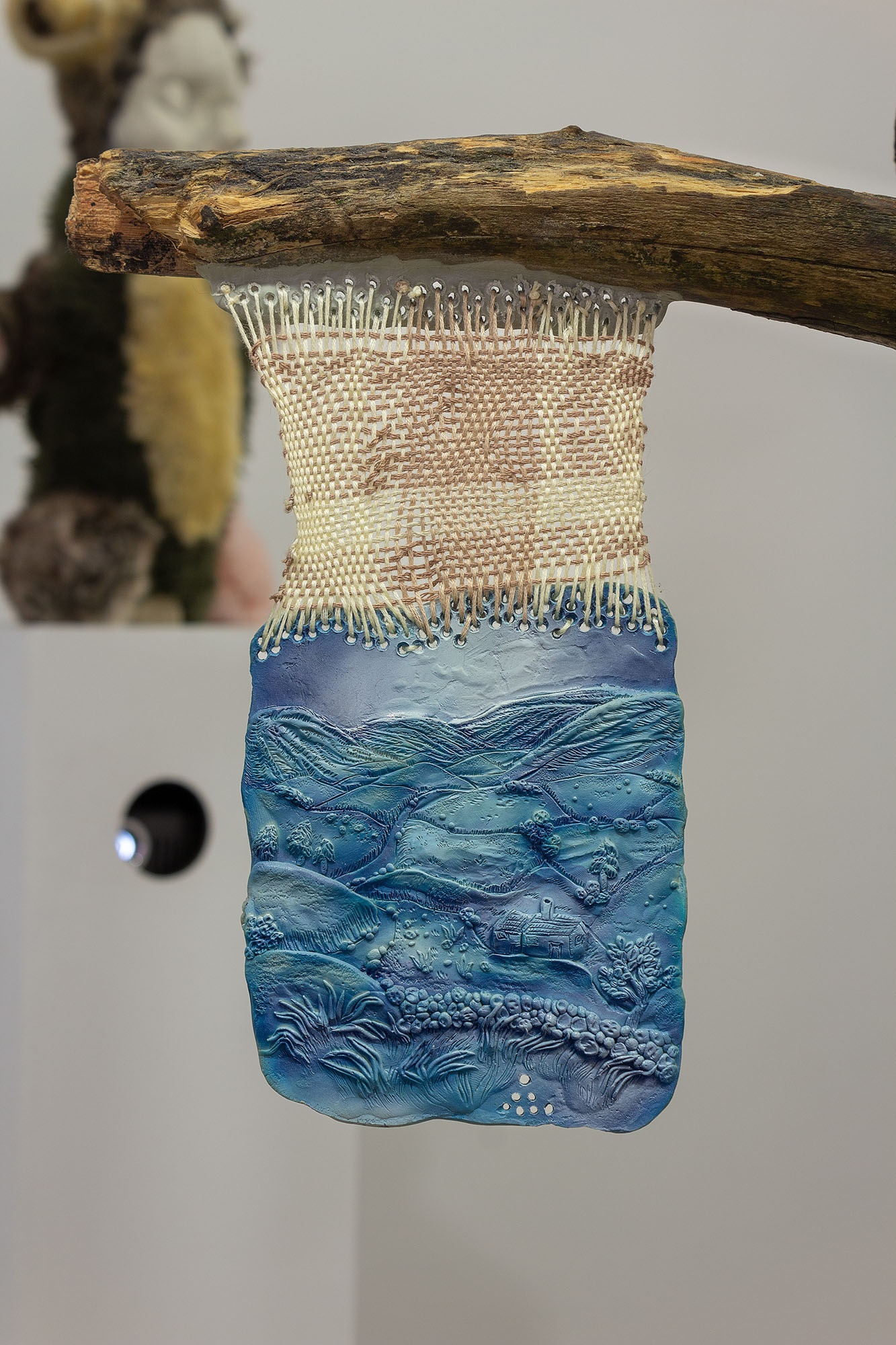
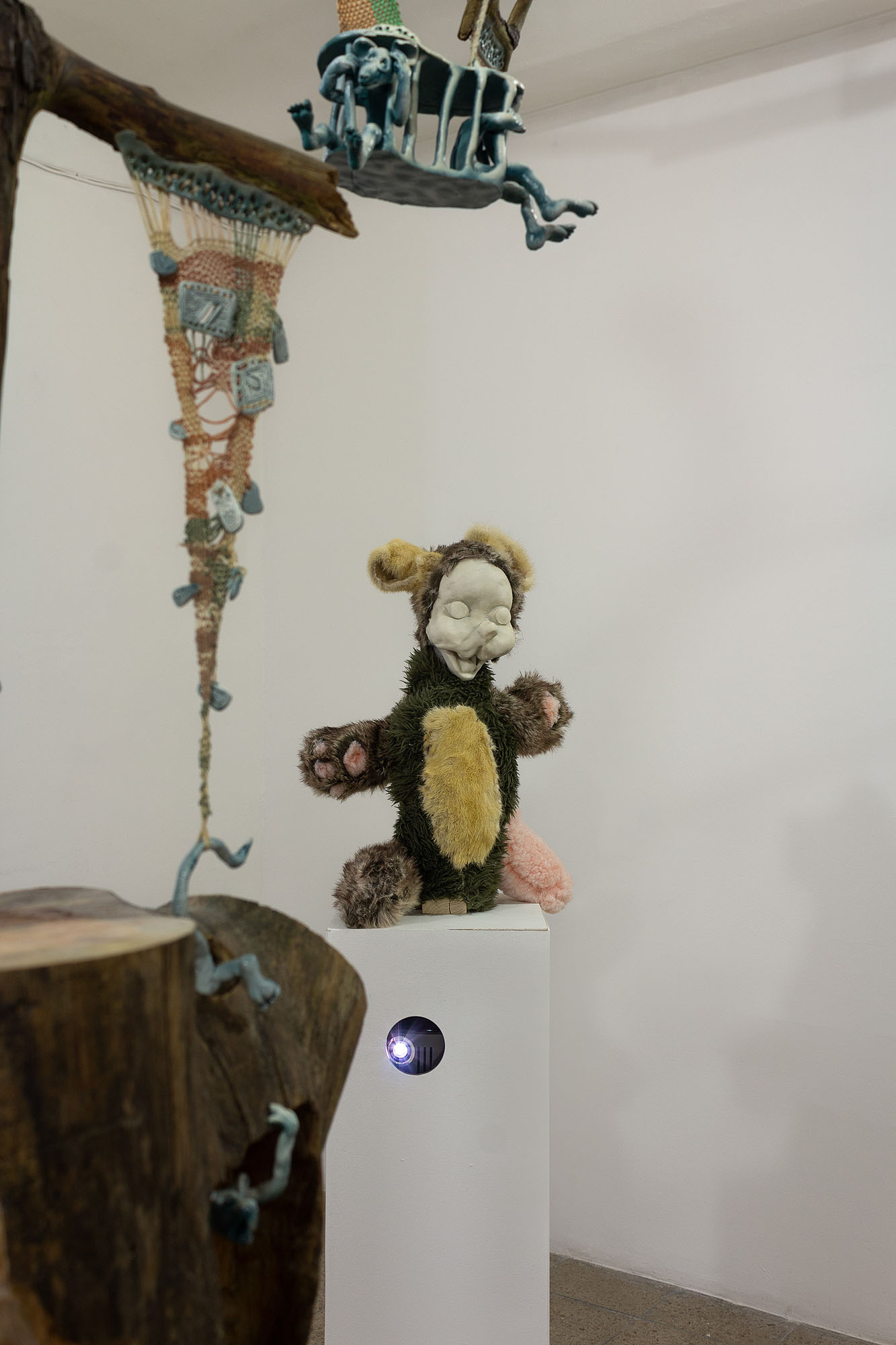
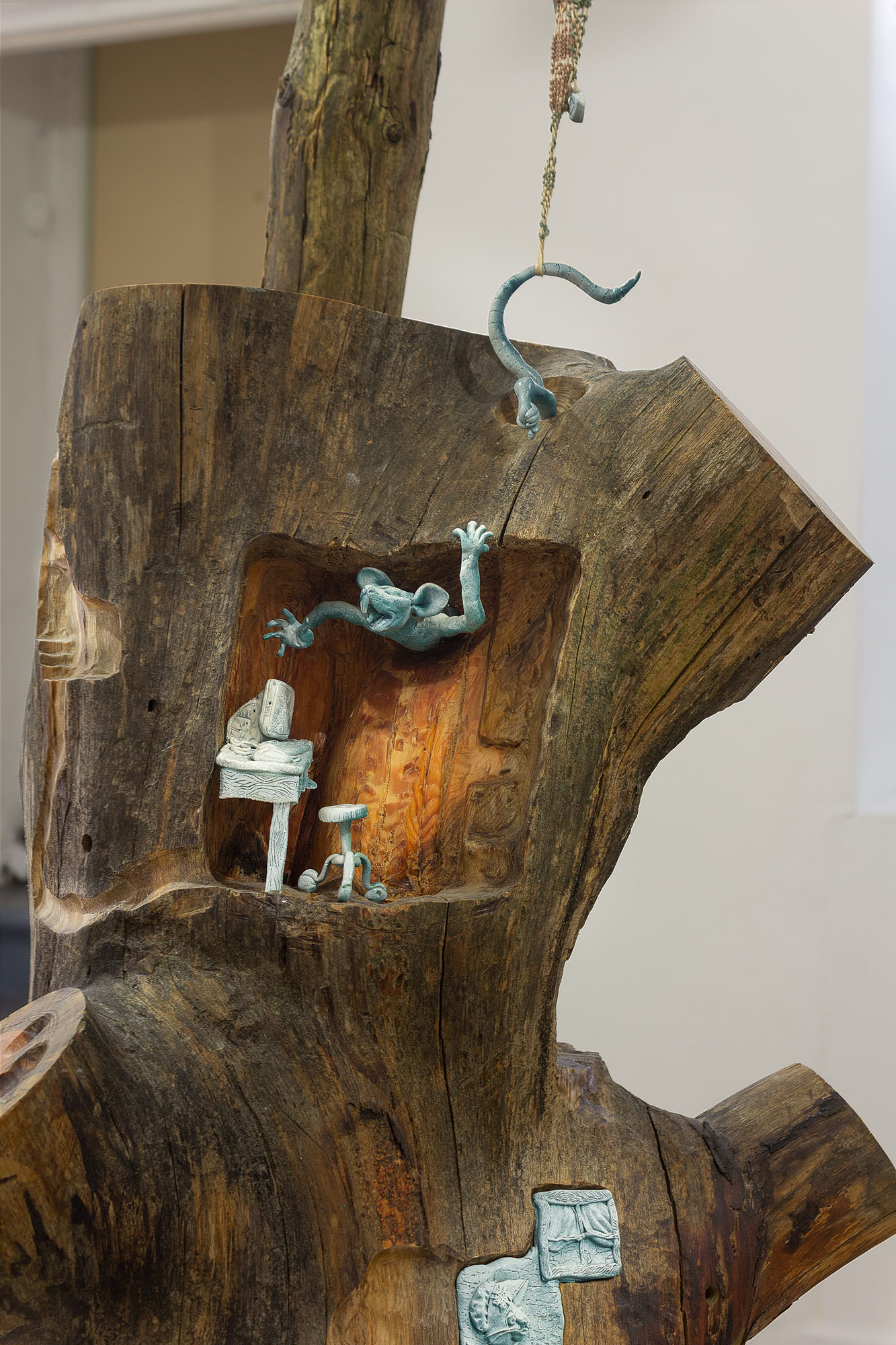
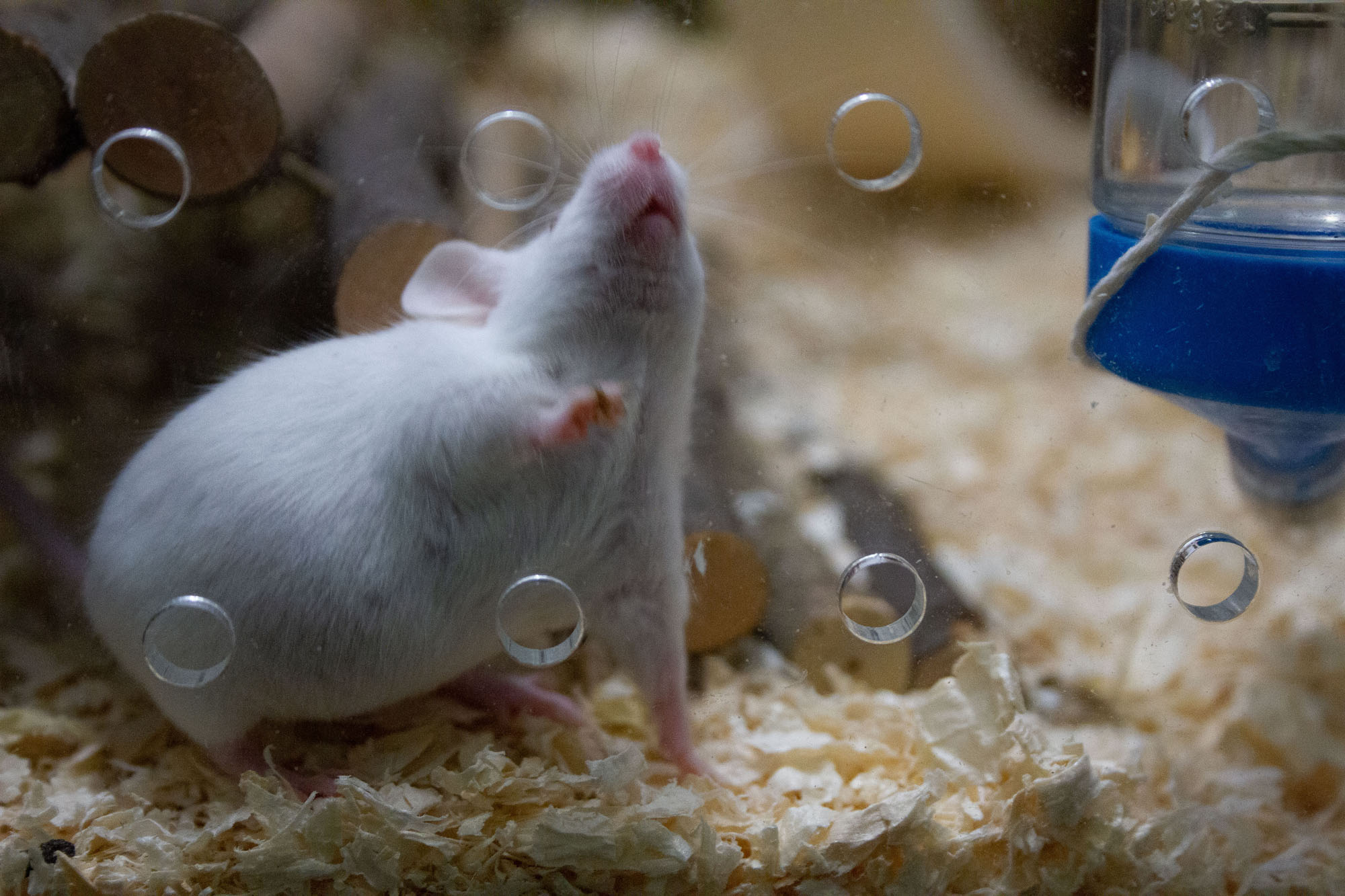
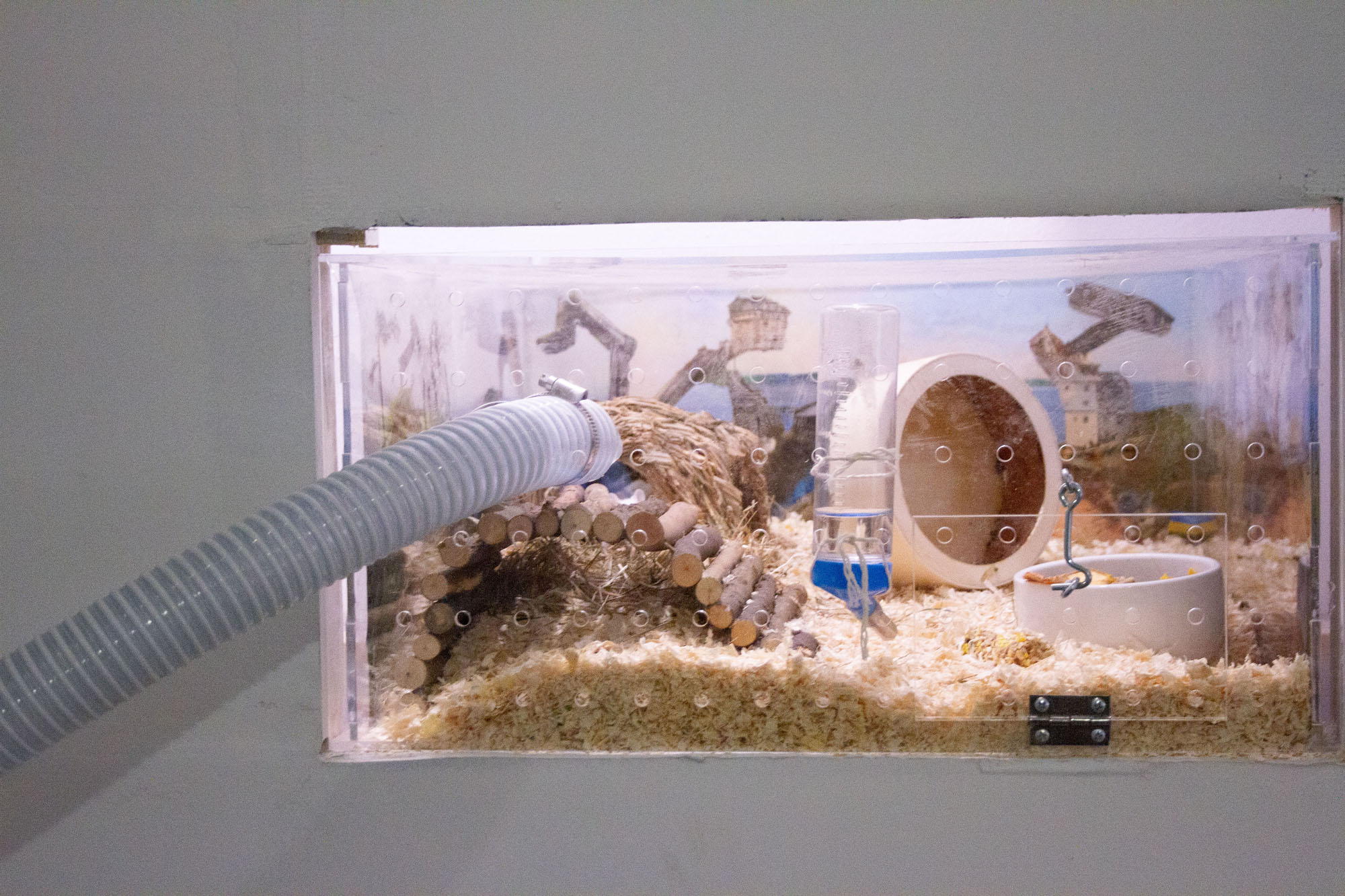
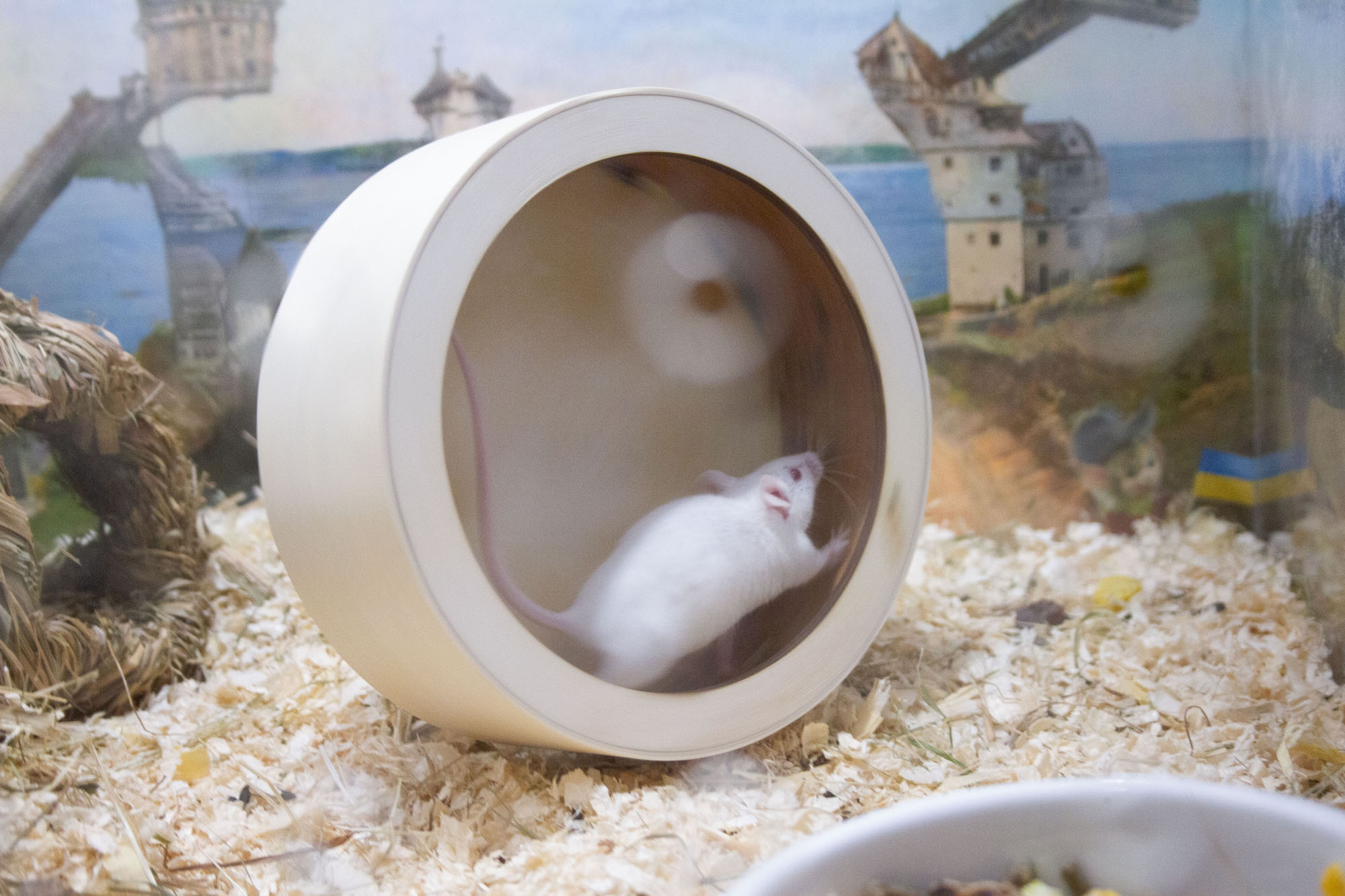
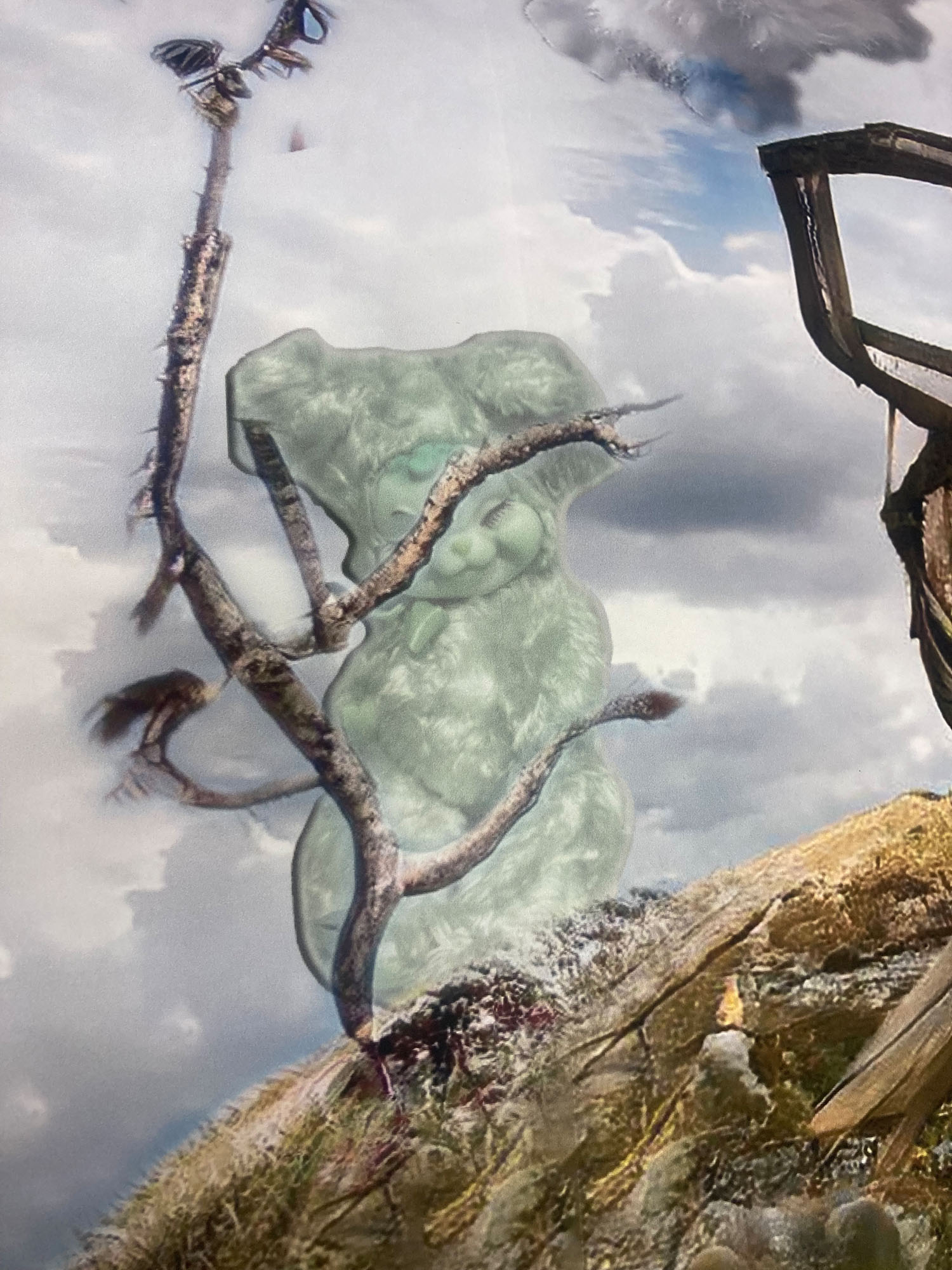
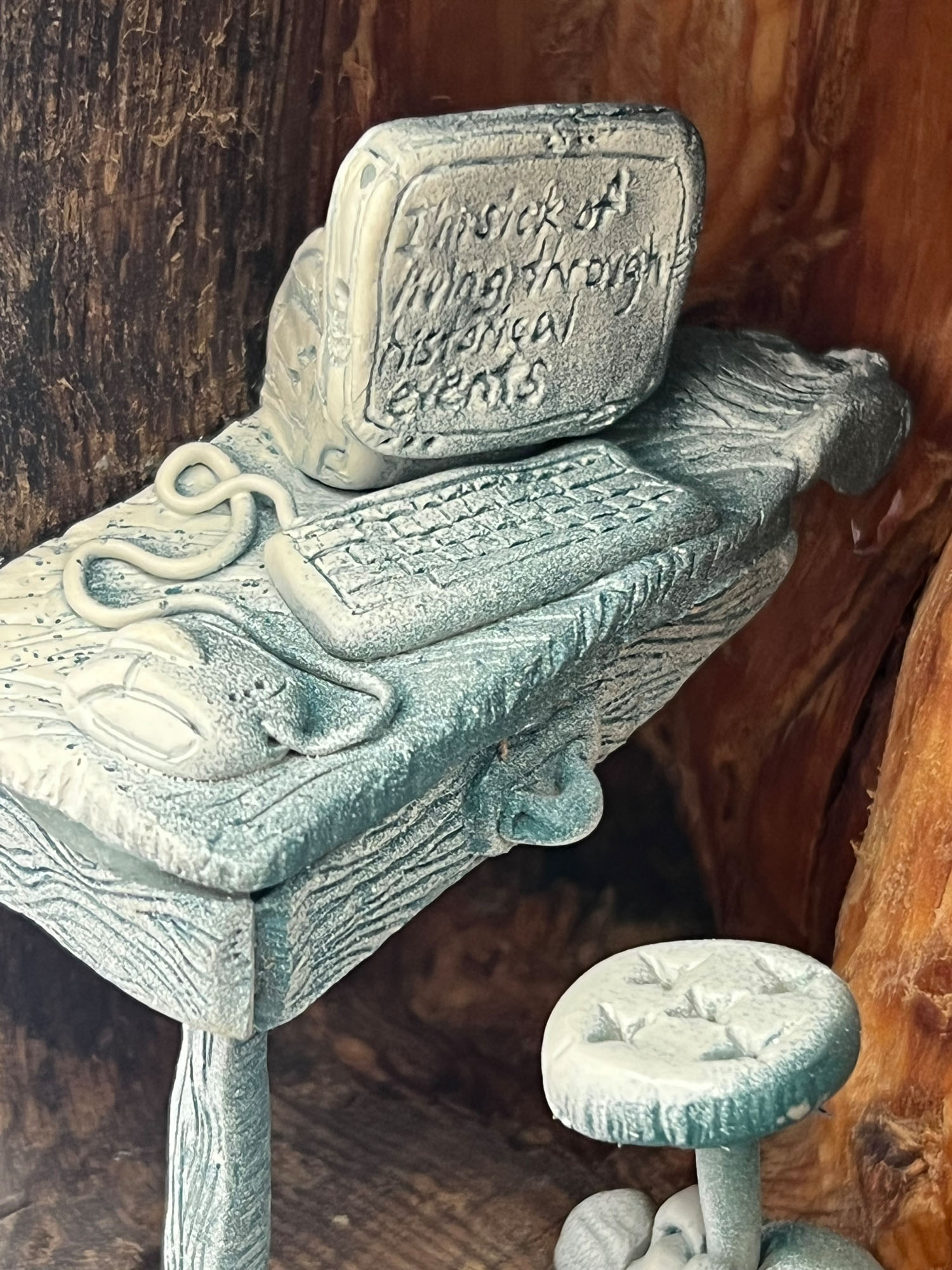
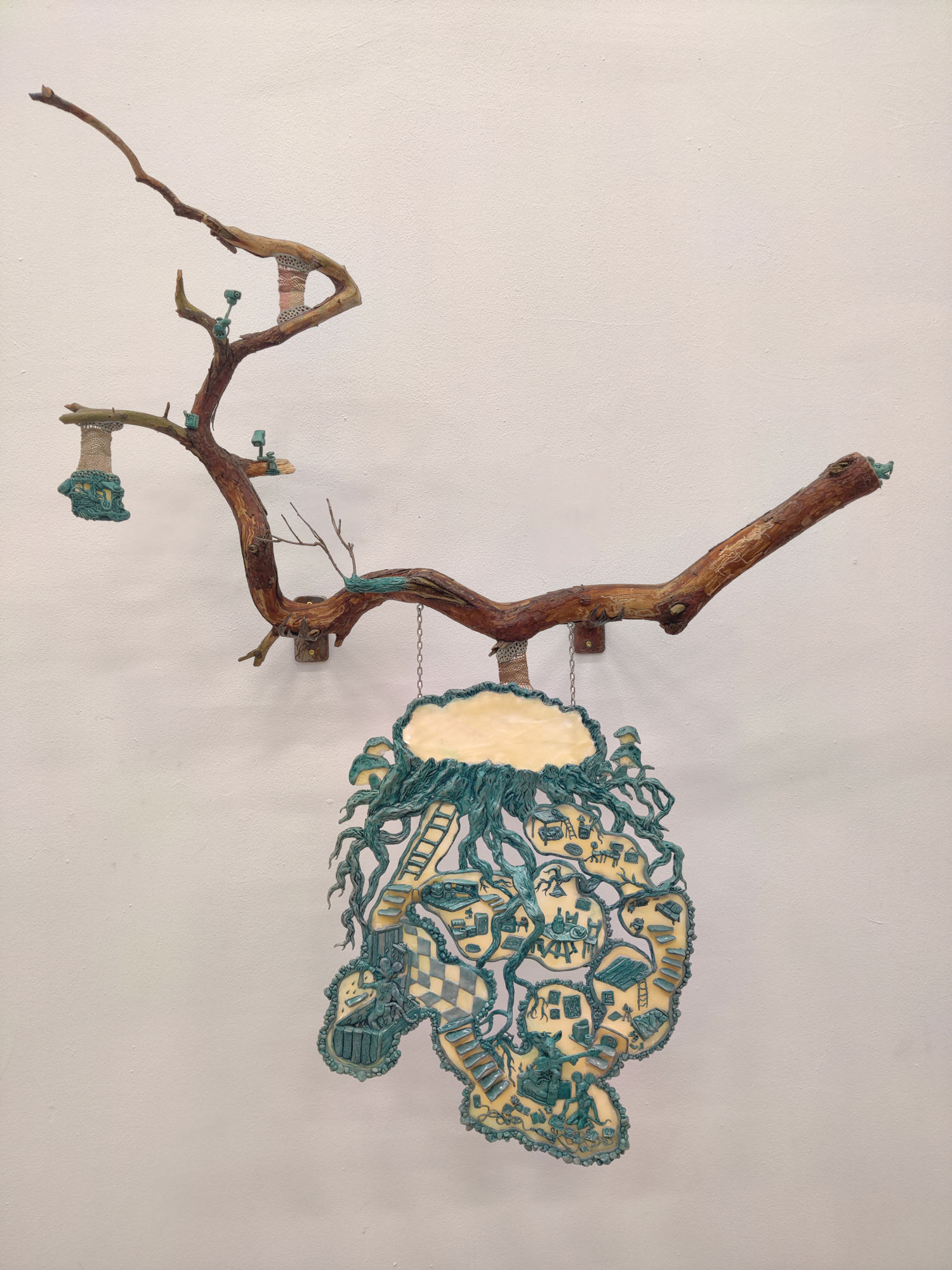
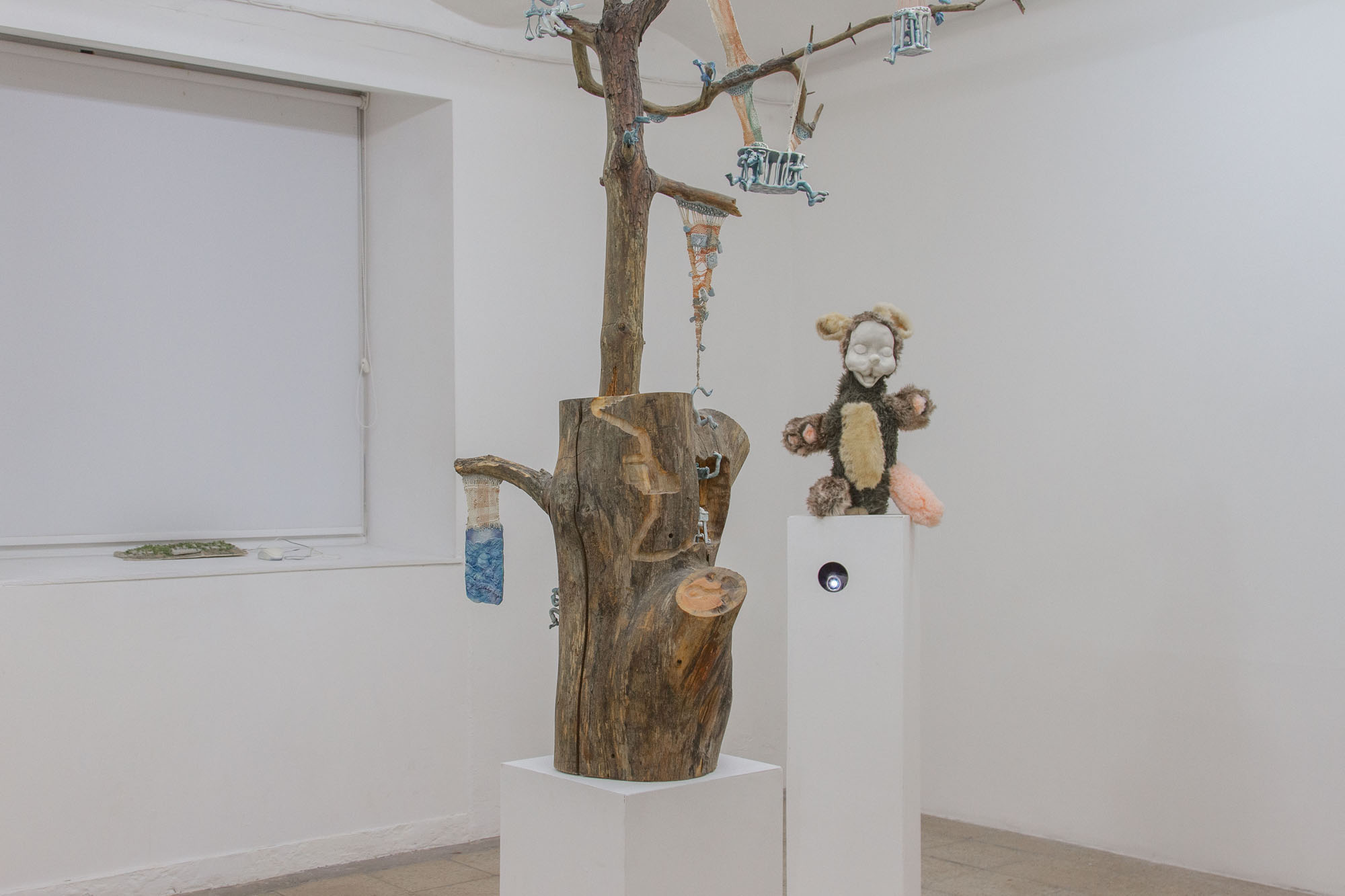
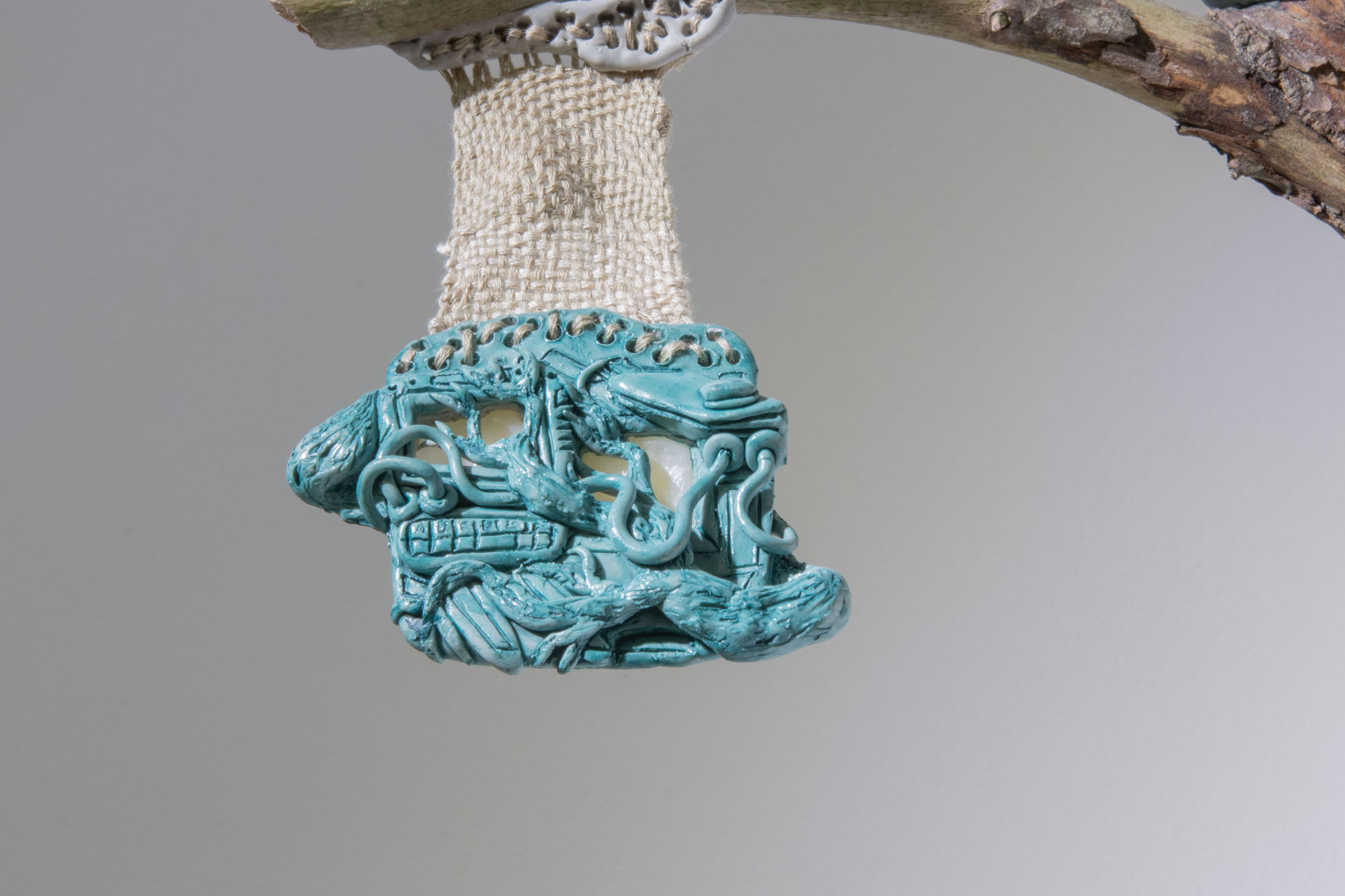
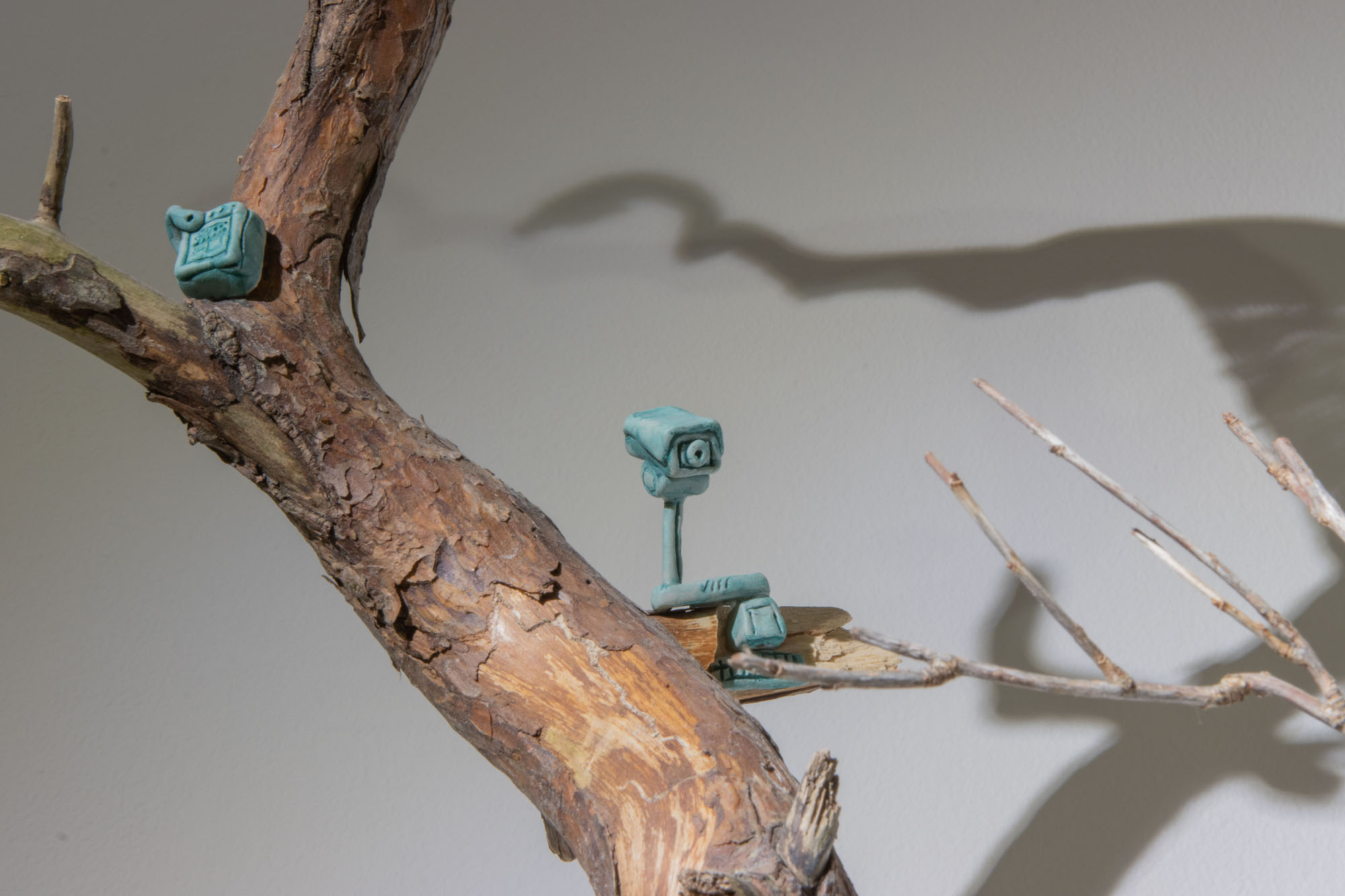
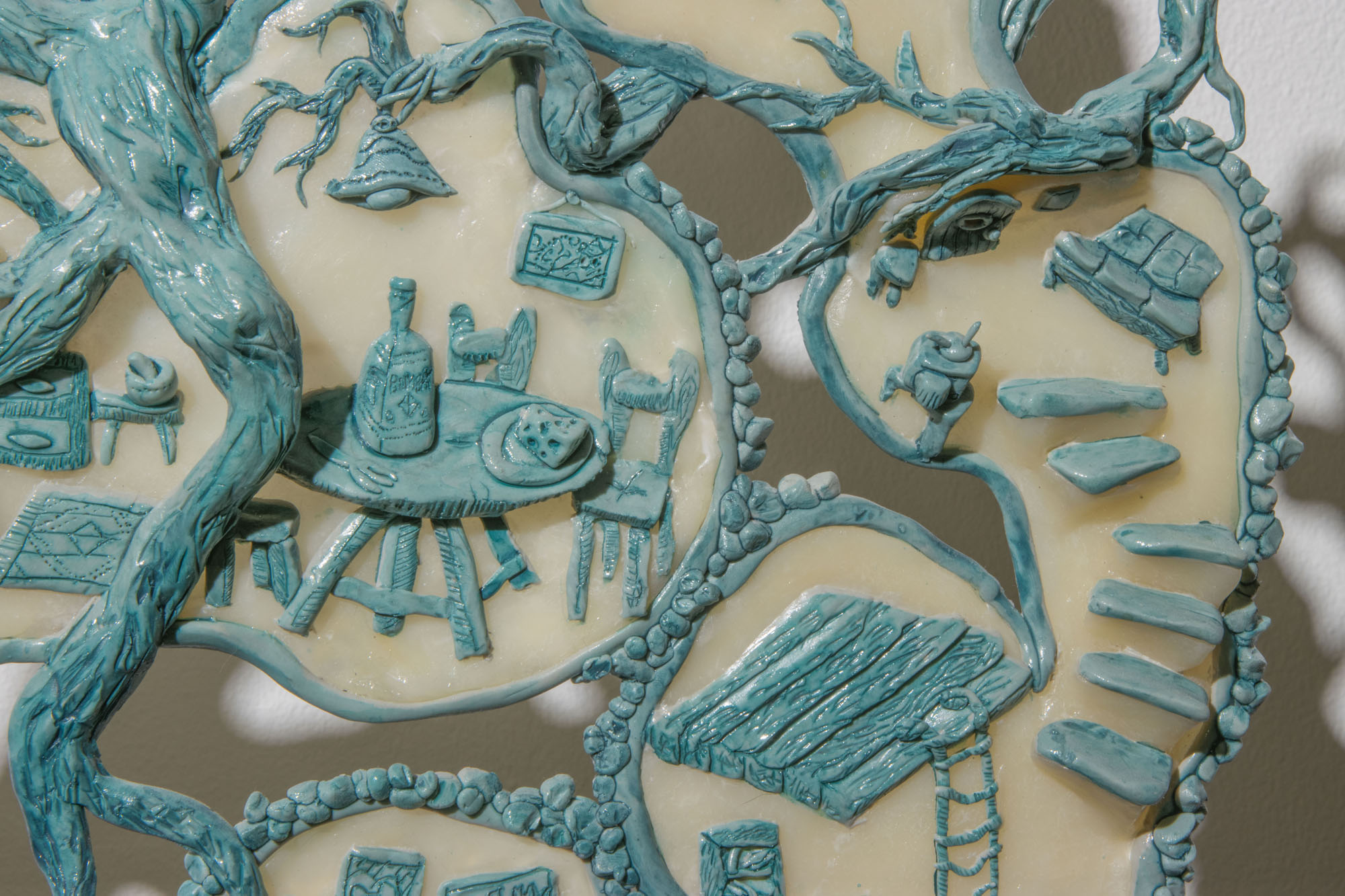
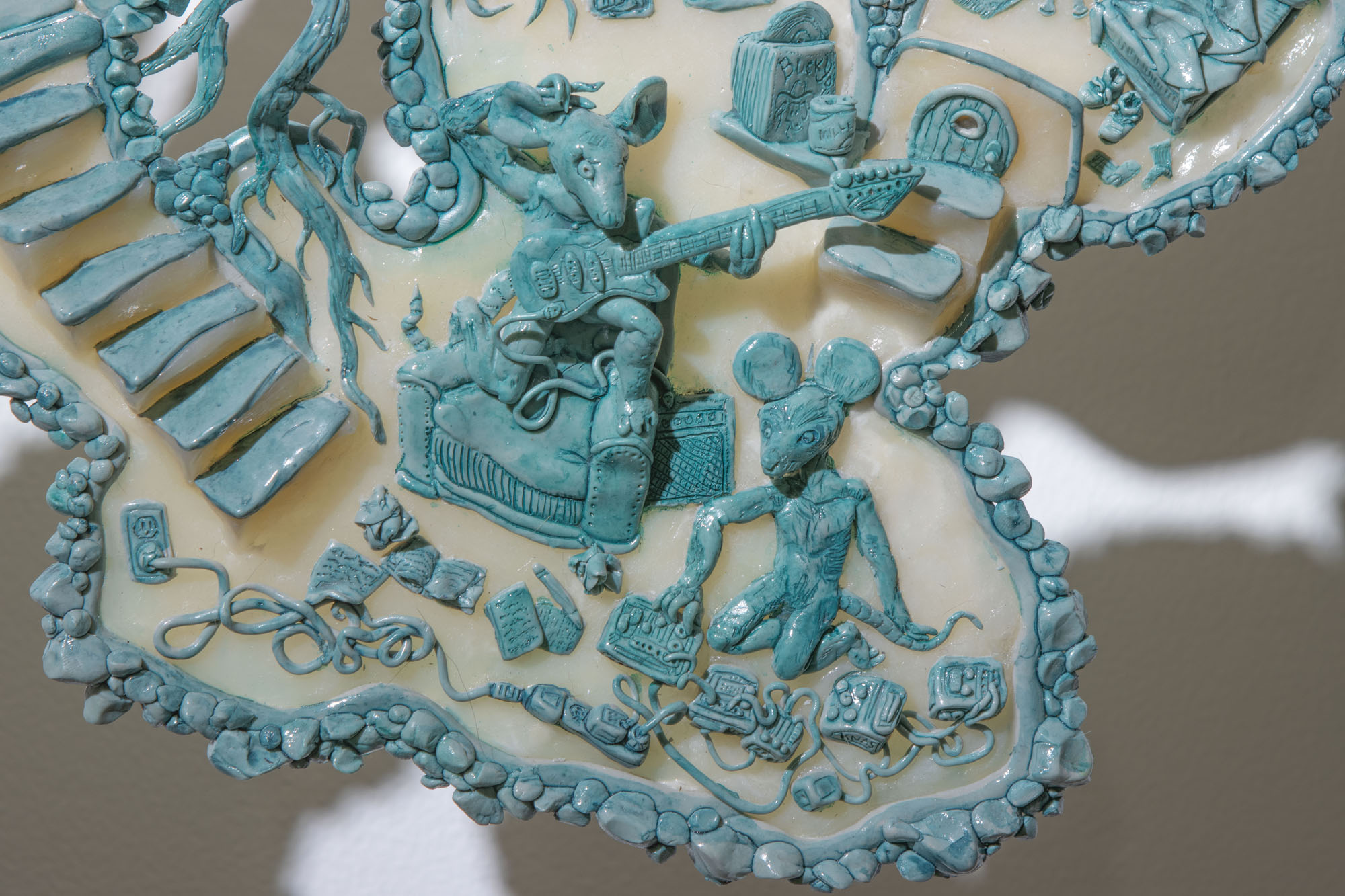
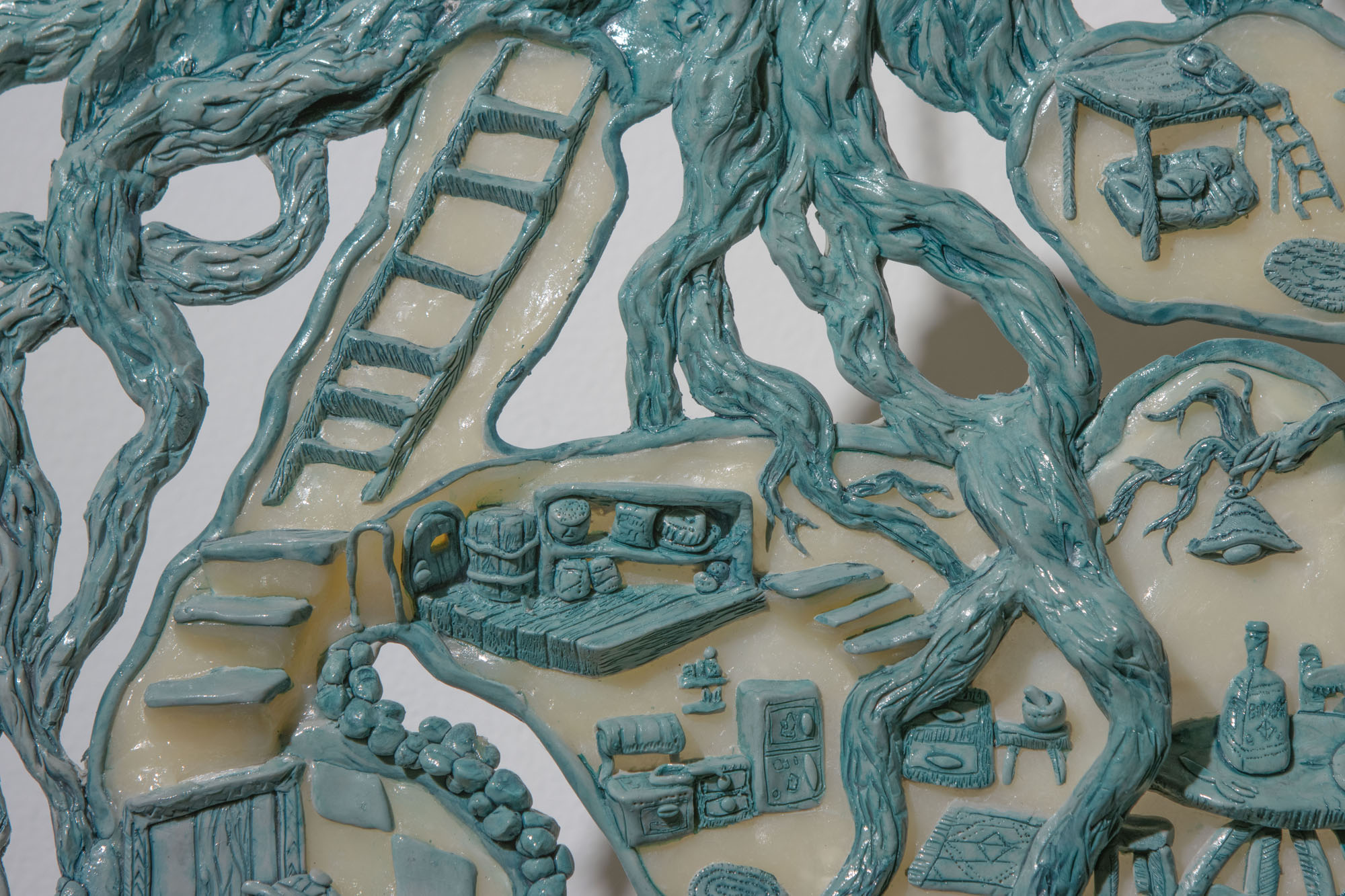
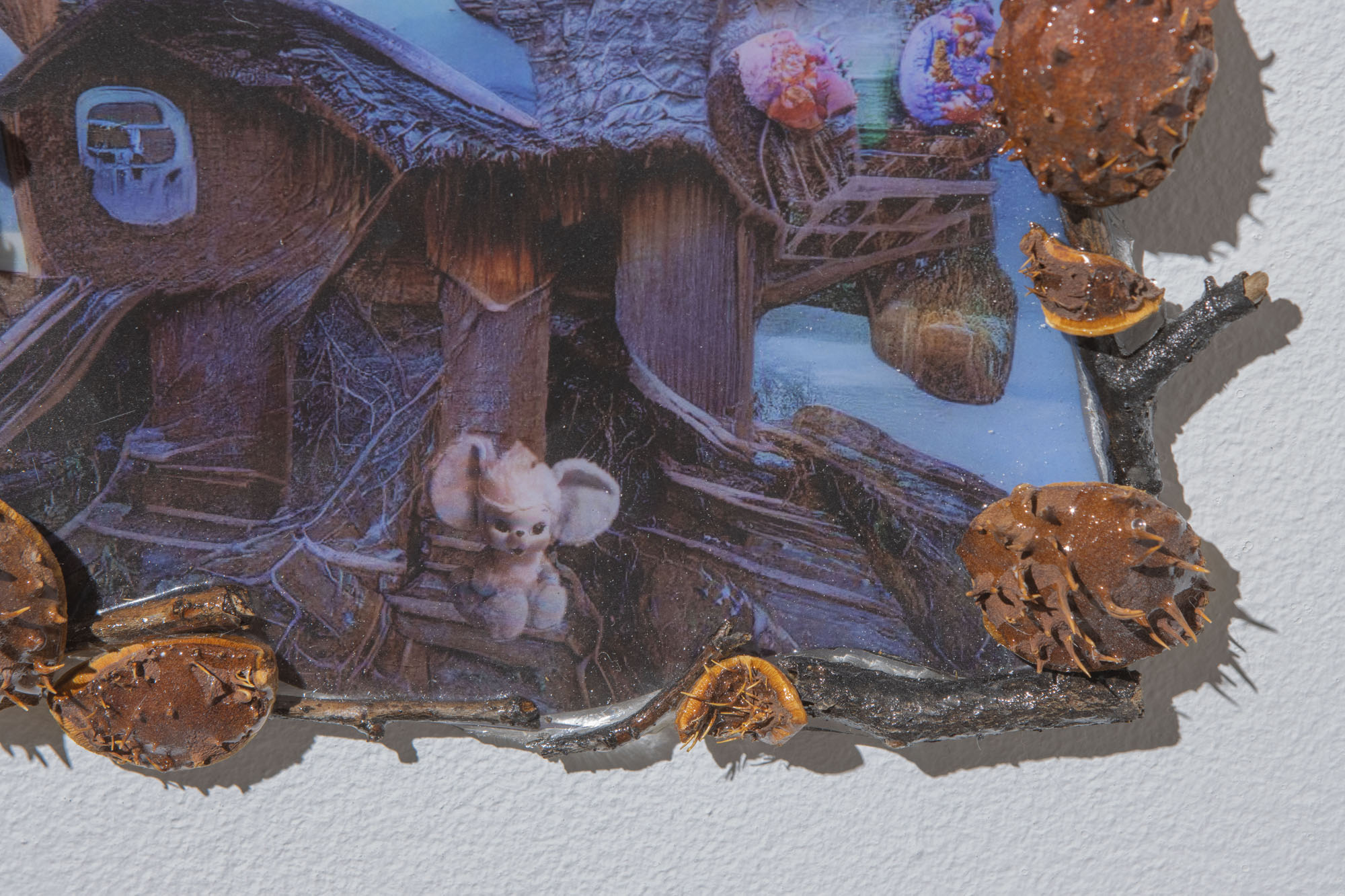
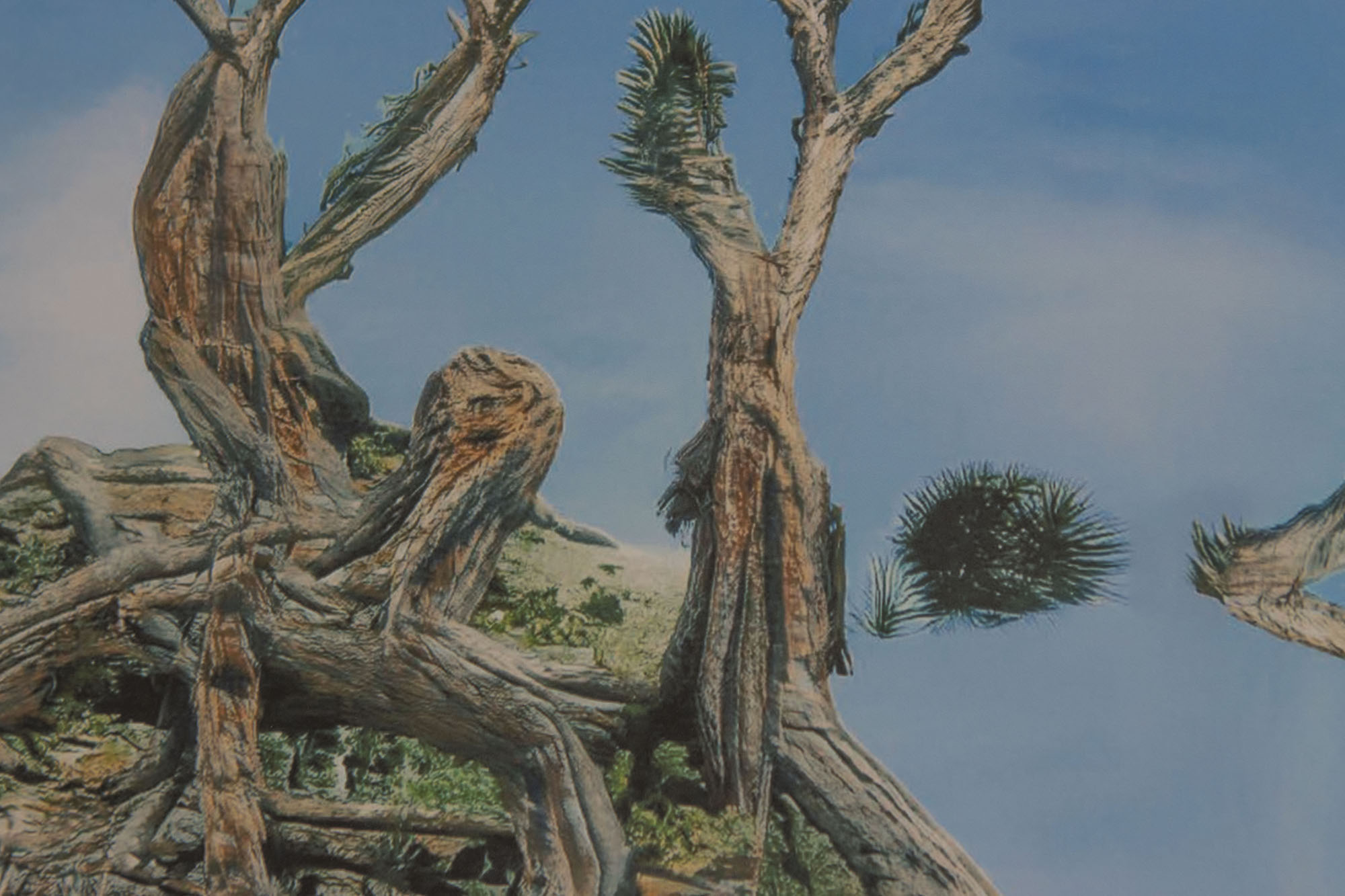
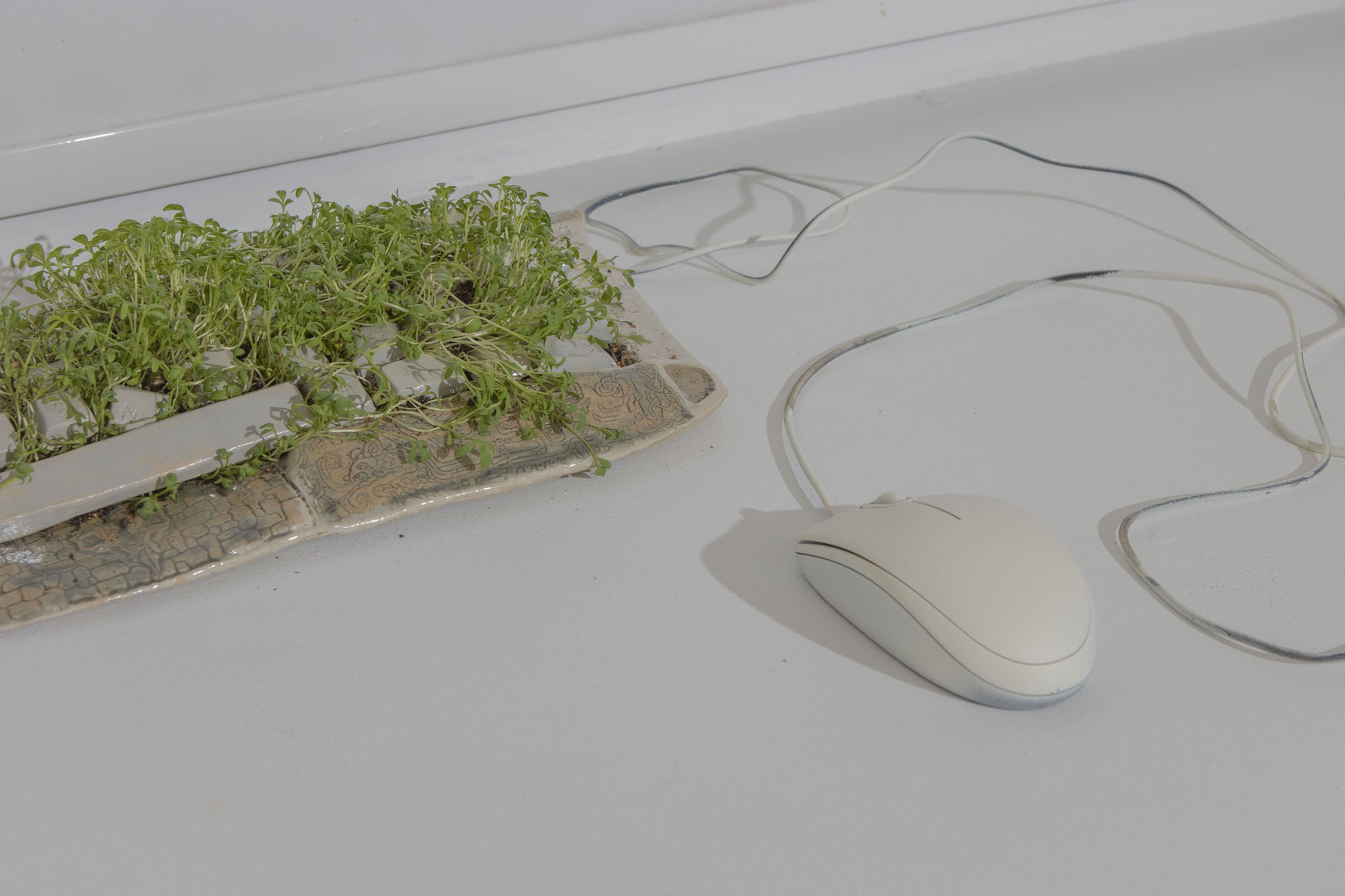
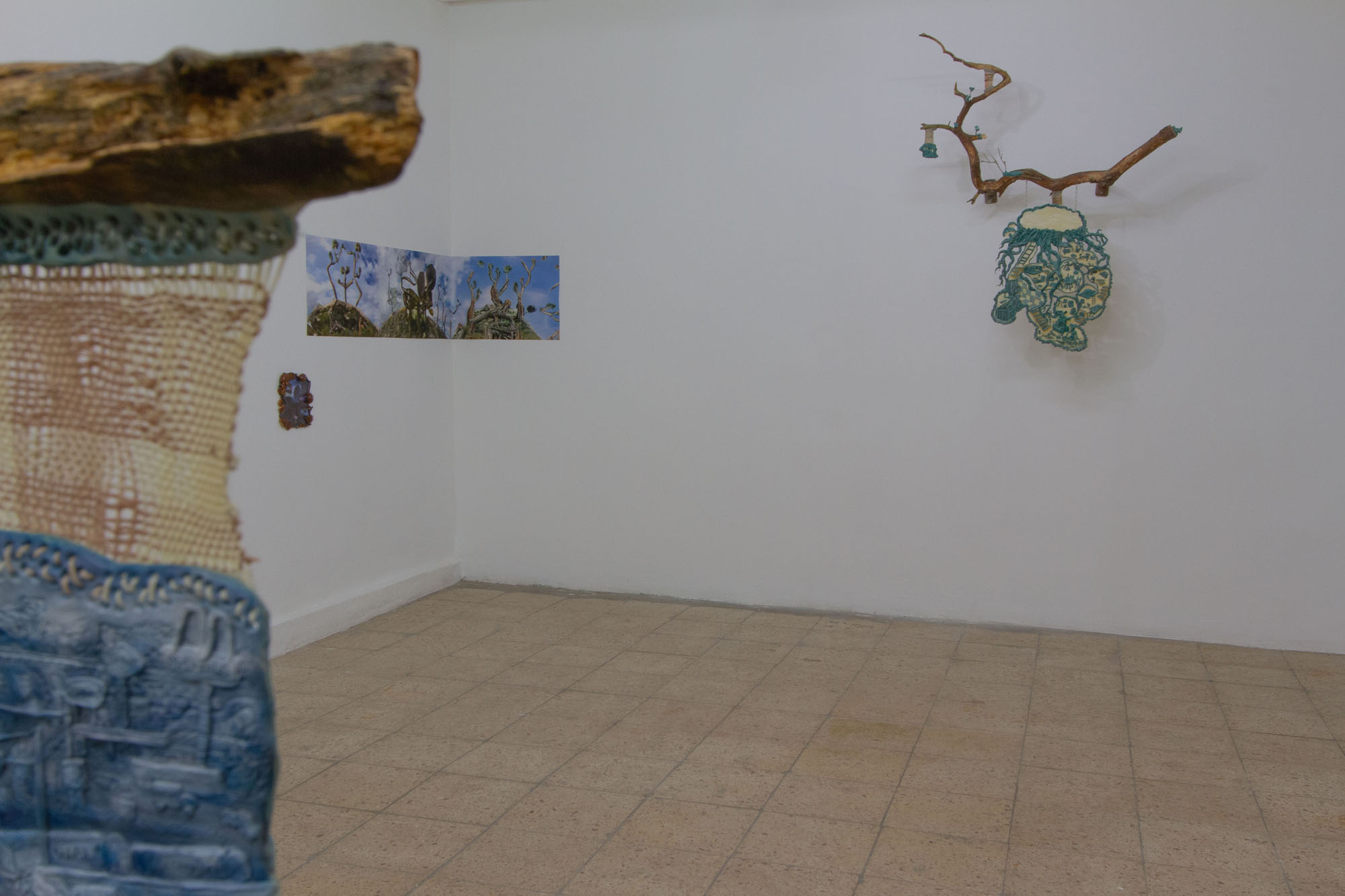
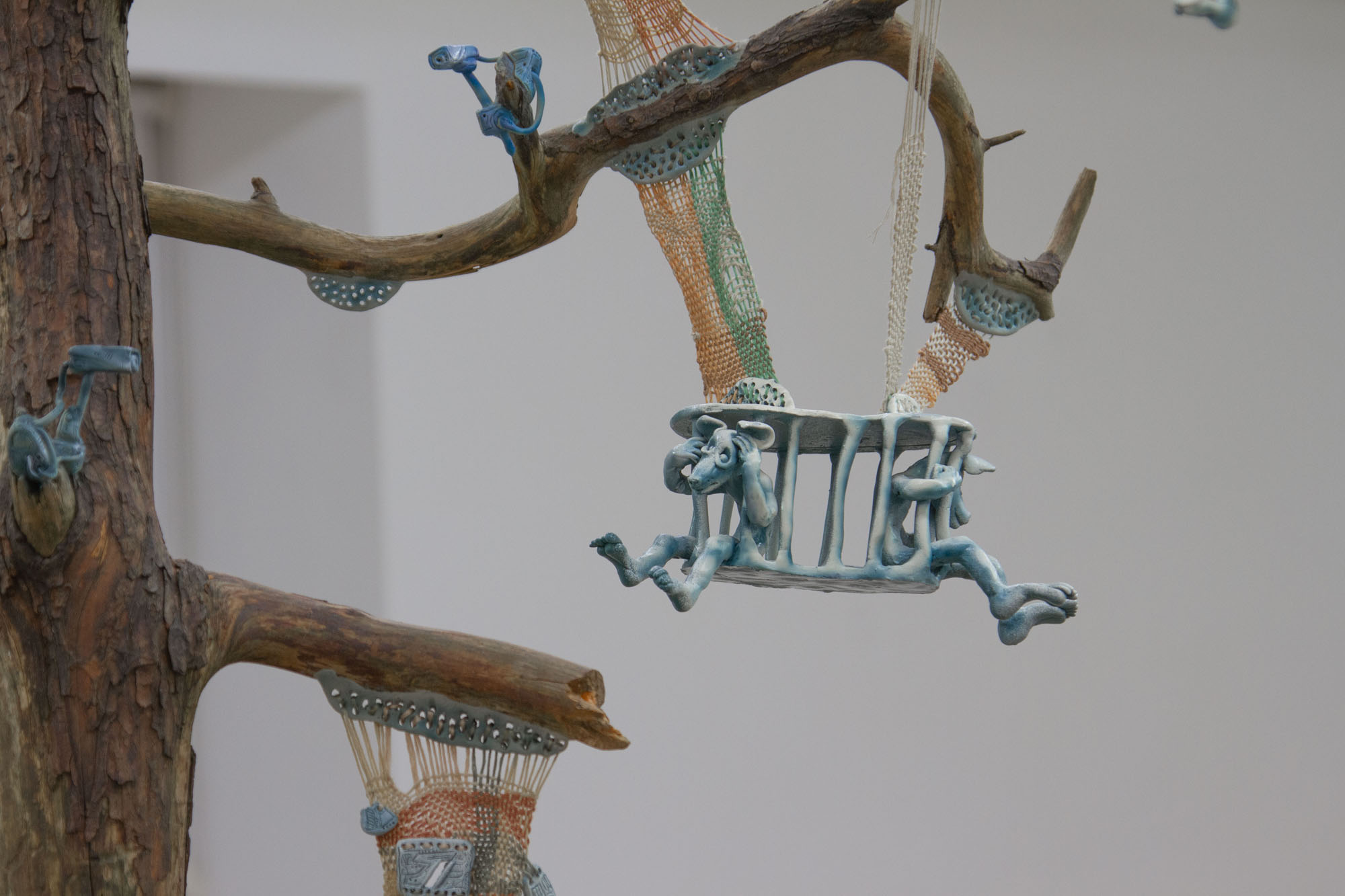
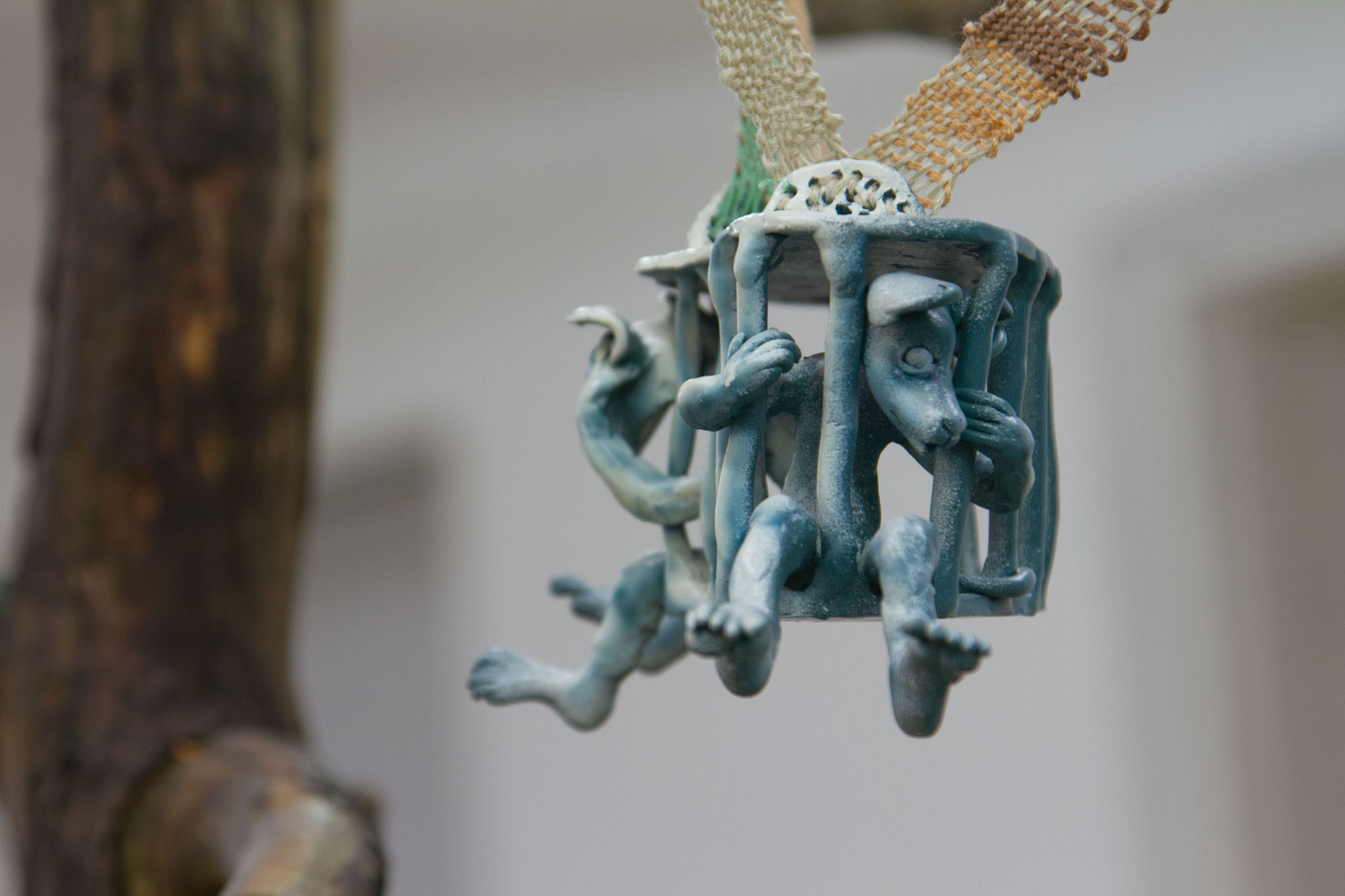
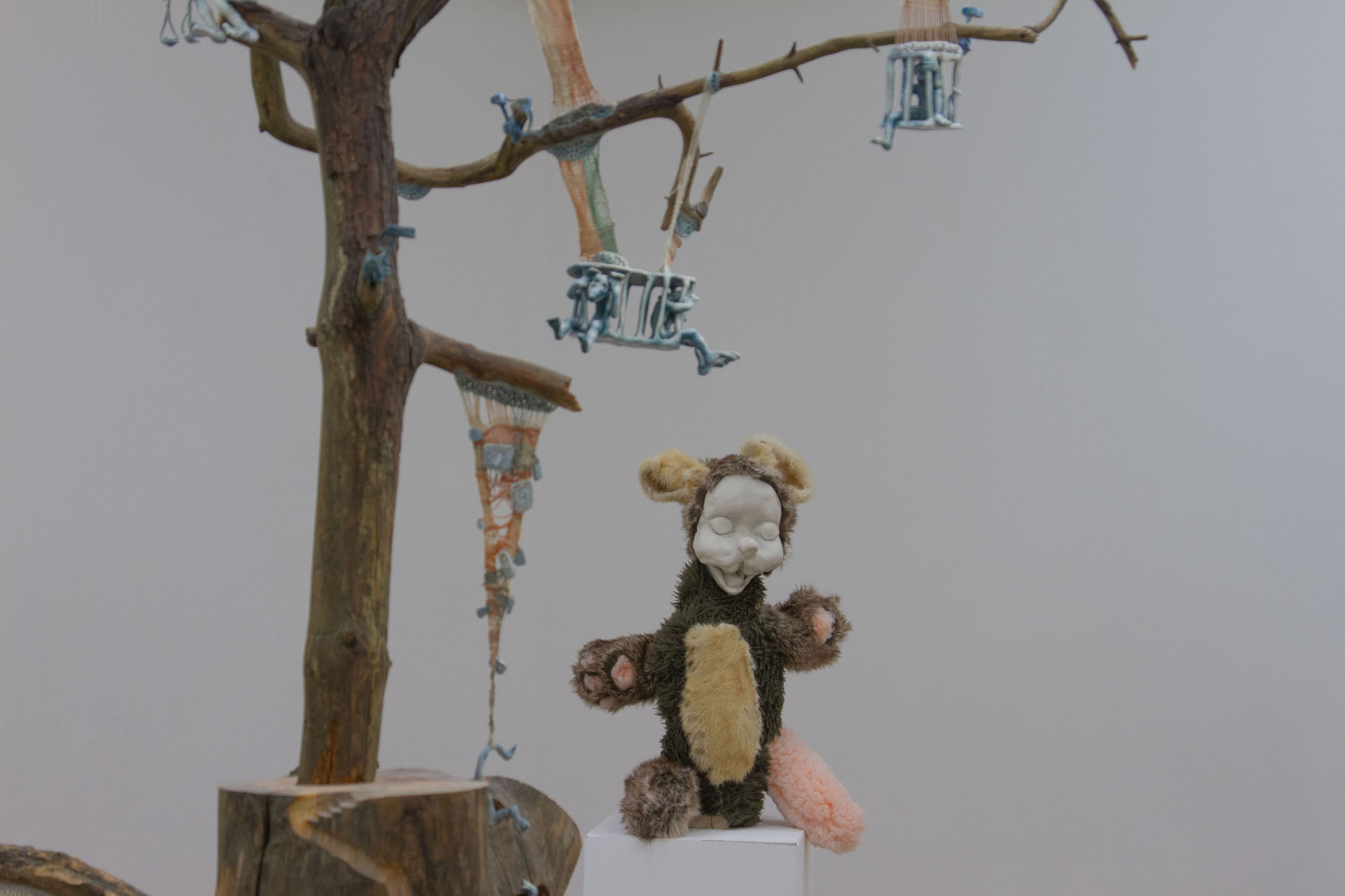
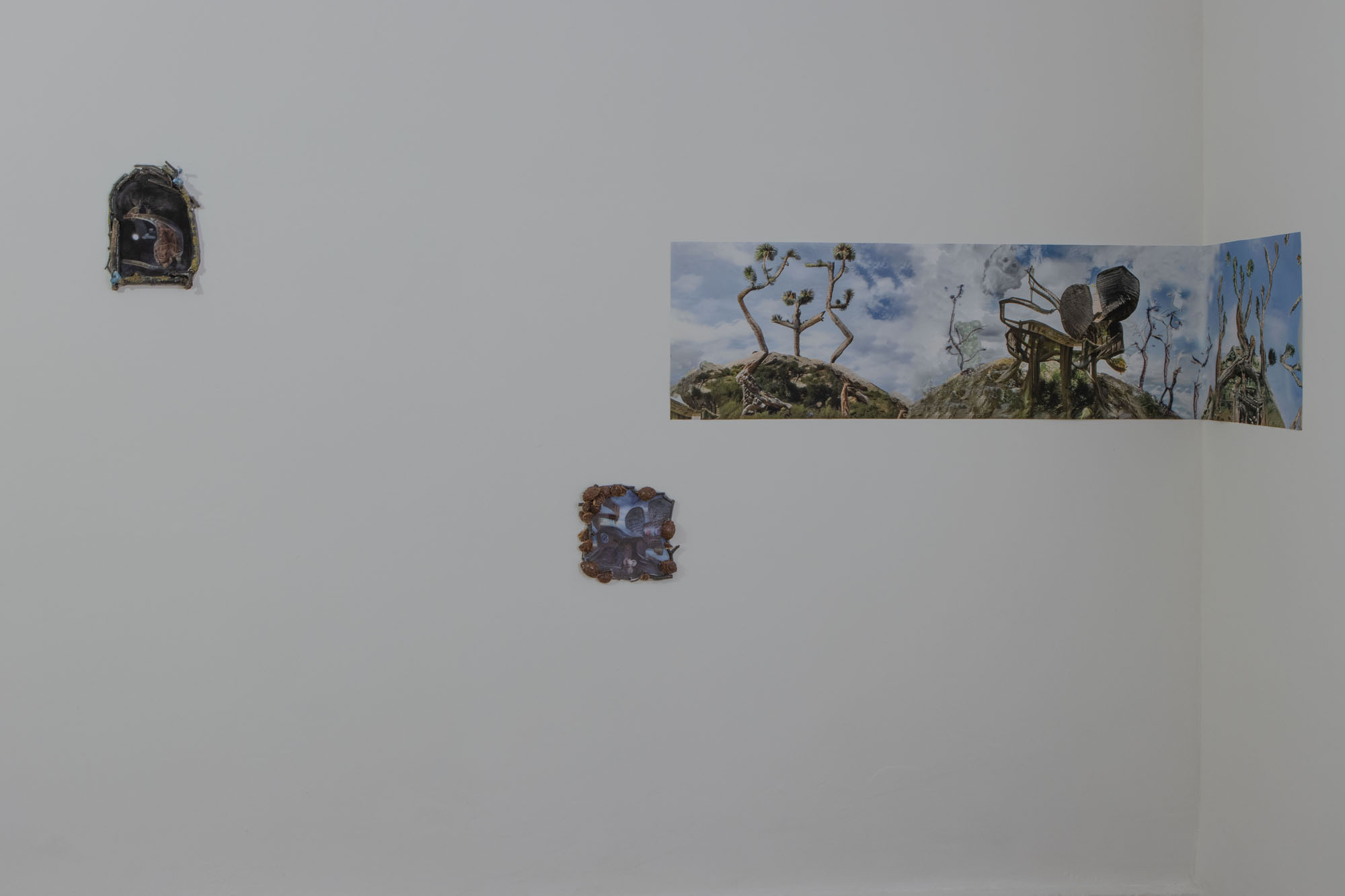
Previous Articles
OFLUXO is proudly powered by WordPress
